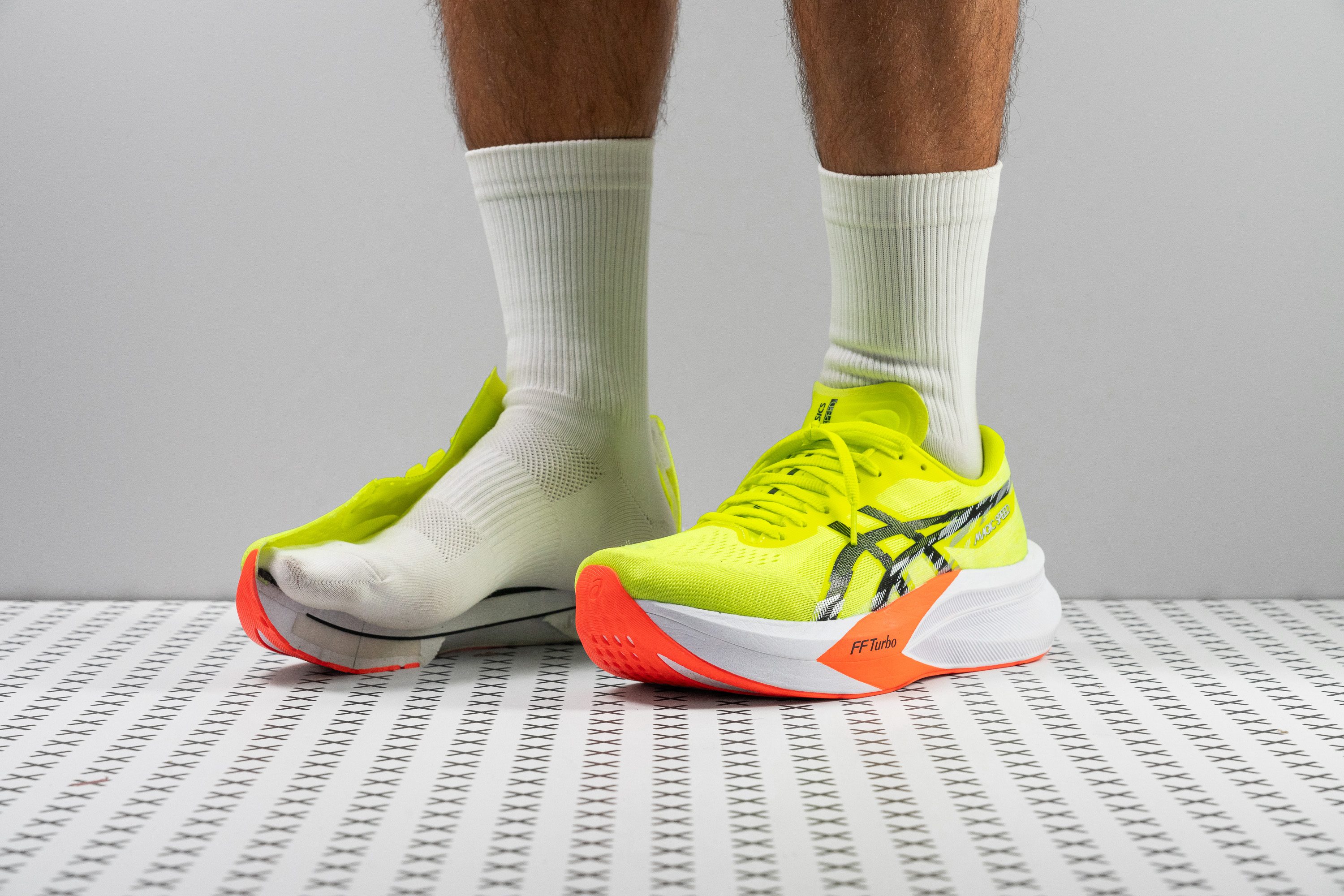Our verdict
- Top pick in best ASICS running shoes
- Top pick in best half marathon running shoes
Pros
- Enhanced midsole
- Exceptional grip
- Superior durability
- Awesome traction
- Excellent value for a supertrainer
- Colossal cushioning
- Carbon plate!
- Ideal for marathon-paced workouts
- Fantastic upper
Cons
- Limited stability
- Low bounce
- Narrow fit
Audience verdict
- Top 6% in road running shoes
- Top 11% in ASICS running shoes
- Top 17% most popular running shoes
Comparison
The most similar running shoes compared
+ + Add a shoe | |||||
|---|---|---|---|---|---|
| Audience score | 92 Superb! | 87 Great! | 89 Great! | 90 Superb! | |
| Price | $170 | $225 | $160 | $250 | |
| Pace | CompetitionTempo | Competition | Tempo | Competition | |
| Shock absorption | High | High | High | High | |
| Energy return | Moderate | High | Moderate | High | |
| Traction | High | High | High | High | |
| Arch support | Neutral | Neutral | Neutral | Neutral | |
| Weight lab Weight brand | 8.4 oz / 237g 8.5 oz / 242g | 7.8 oz / 220g 7.7 oz / 218g | 9.5 oz / 268g 9.5 oz / 269g | 6.5 oz / 183g 6.4 oz / 181g | |
| Lightweight | ✓ | ✓ | ✗ | ✓ | |
| Drop lab Drop brand | 9.6 mm 8.0 mm | 9.5 mm 8.0 mm | 10.1 mm 10.0 mm | 6.5 mm 5.0 mm | |
| Strike pattern | HeelMid/forefoot | HeelMid/forefoot | Heel | Mid/forefoot | |
| Size | True to size | True to size | Slightly small | Slightly small | |
| Midsole softness | Soft | Balanced | Soft | Balanced | |
| Difference in midsole softness in cold | Small | Small | Normal | Small | |
| Toebox durability | Good | Good | Decent | Good | |
| Heel padding durability | Good | Good | Decent | Good | |
| Outsole durability | Good | Good | Decent | Good | |
| Breathability | Breathable | Breathable | Moderate | Breathable | |
| Width / fit | Medium | Medium | Narrow | Narrow | |
| Toebox width | Medium | Medium | Narrow | Medium | |
| Stiffness | Stiff | Stiff | Stiff | Stiff | |
| Torsional rigidity | Stiff | Stiff | Stiff | Stiff | |
| Heel counter stiffness | Flexible | Flexible | Flexible | Flexible | |
| Plate | Carbon plate | Carbon plate | Carbon plate | Carbon plate | |
| Rocker | ✓ | ✓ | ✗ | ✓ | |
| Heel lab Heel brand | 42.5 mm 43.5 mm | 38.1 mm 40.0 mm | 37.4 mm 39.0 mm | 39.1 mm 39.5 mm | |
| Forefoot lab Forefoot brand | 32.9 mm 35.5 mm | 28.6 mm 32.0 mm | 27.3 mm 29.0 mm | 32.6 mm 34.5 mm | |
| Widths available | NormalWide | Normal | NormalWide | NormalWide | |
| Orthotic friendly | ✓ | ✓ | ✓ | ✓ | |
| Season | SummerAll seasons | SummerAll seasons | All seasons | SummerAll seasons | |
| Removable insole | ✓ | ✓ | ✓ | ✓ | |
| Ranking | #16 Top 5% | #144 Top 39% | #115 Top 31% | #74 Top 20% | |
| Popularity | #61 Top 17% | #33 Top 9% | #55 Top 15% | #120 Top 33% |
Who should buy
We've tested the Magic Speed 4 in the lab and here's why we highly recommend it:
- It's an ideal choice for those seeking the dynamic feel of a carbon-plated shoe without the high cost, delivering excellent value.
- It's a resilient training partner to the more expensive Metaspeed series from ASICS, combining durability with performance.
- Provides superior cushioning for heavyweight heel strikers that run with a neutral footstrike.
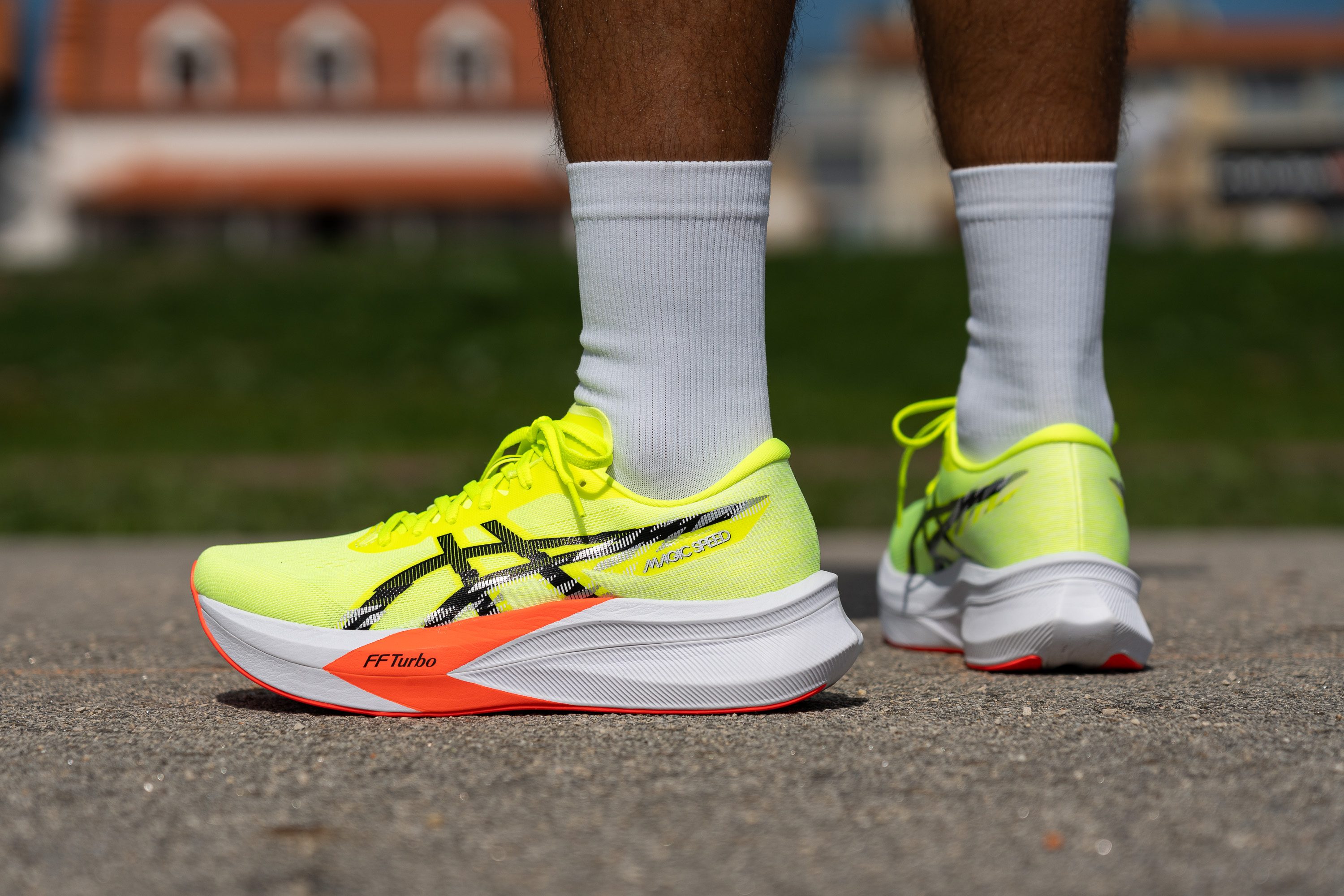
Who should NOT buy
While the Magic Speed 4 incorporates a carbon plate, its lack of a full-length superfoam and a lighter construction significantly diminish its appeal for those seeking top-tier performance. Instead, we suggest the ASICS Metaspeed Sky Paris, which, though considerably more expensive, it provides superior speed, lightness, and energy return, leading to faster finish times.
Additionally, we think the Magic Speed 4's less-than-ideal support could pose challenges for runners who prefer a stable ride. From our testing experience, we found that both the Hoka Mach X and the ASICS Superblast 2 offer superior stability, exceptional cushioning, and impressive energy return, making them much better choices in the supertrainer category.
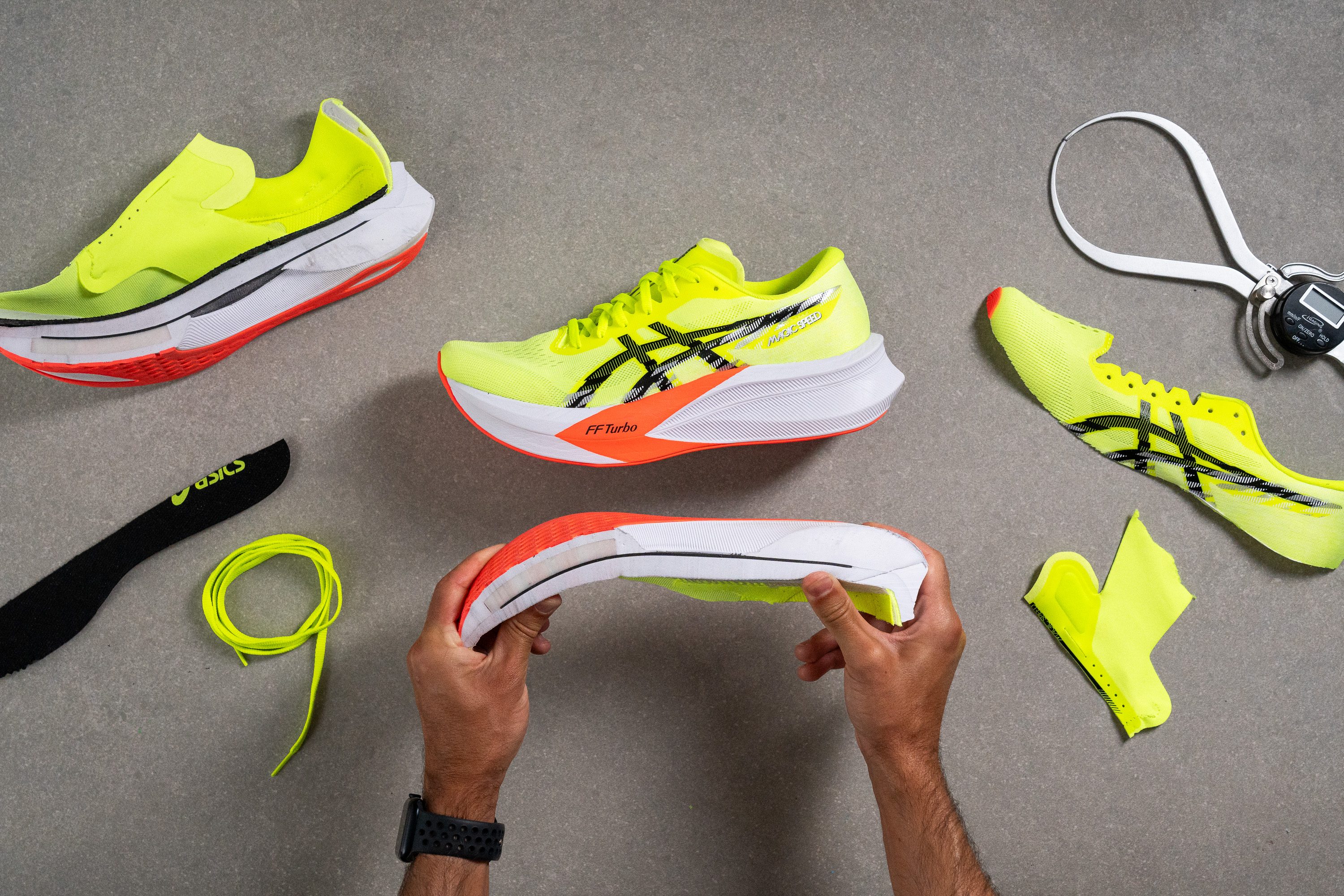
Cushioning
Shock absorption
We performed a series of tests on the Magic Speed 4 following the ASTM F1976 standard, and the results are quite telling. In fact, they could genuinely impact your buying decision.
On the bright side, shock absorption has clearly improved over version 3. We measured 144 SA in the heel and 122 SA in the forefoot, both excellent scores that will satisfy runners seeking strong joint protection or simply craving a pillow-like underfoot feel.
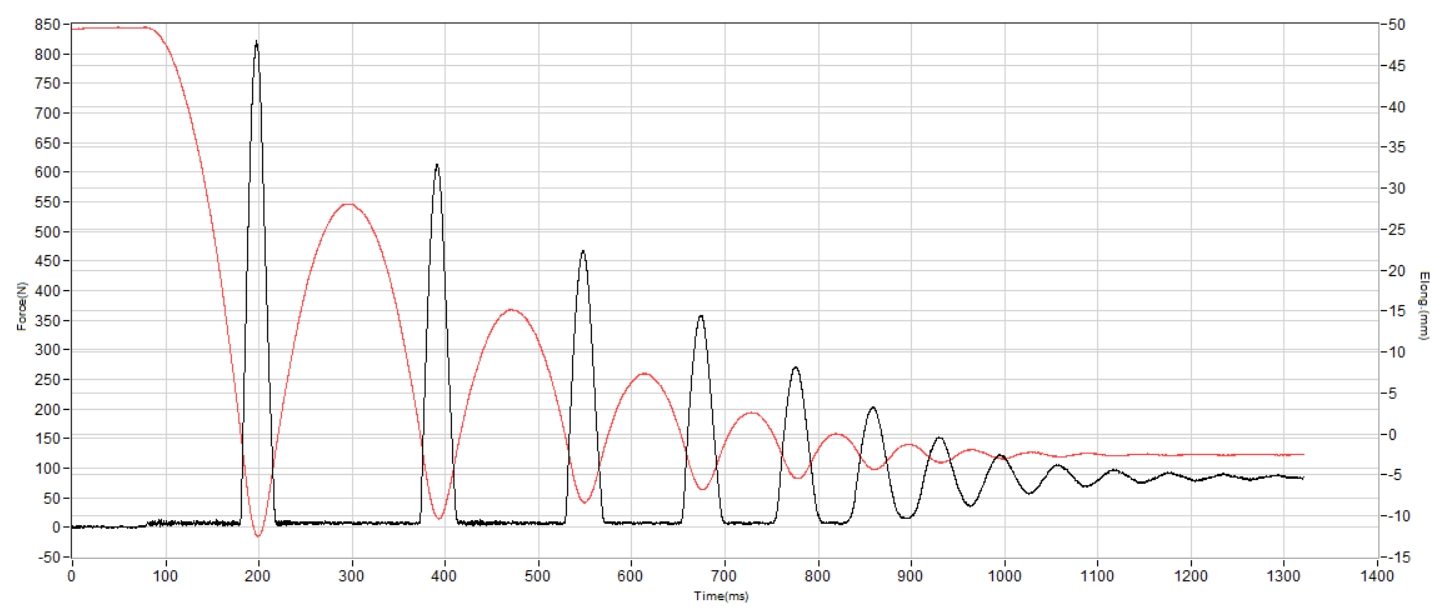
| Magic Speed 4 | 144 SA |
| Average | 129 SA |
Energy return
But there’s also bad news. Energy return remains fundamentally weak, making this one of the lowest-performing shoes in the new supertrainer category.
We measured just 55.5% in the heel—an undeniable letdown, though not surprising given it’s entirely FF Blast+ in that area. The forefoot fares slightly better thanks to a puck of FF Turbo, reaching 61.8%. Hopefully, version 5 packs in more superfoam... it definitely needs it.
| Magic Speed 4 | 55.5% |
| Average | 58.5% |
Heel stack
While the MS3 served well as a tempo training companion, it lacked the stack height to earn our "supertrainer" endorsement. The Magic Speed 4, however, boasts a colossal heel stack of 42.5 mm.
Yet, it's not without compromises—particularly in weight and stability. On the upside, the superior heel cushioning makes the MS4 a far better choice for heavier runners or those using it for long runs.
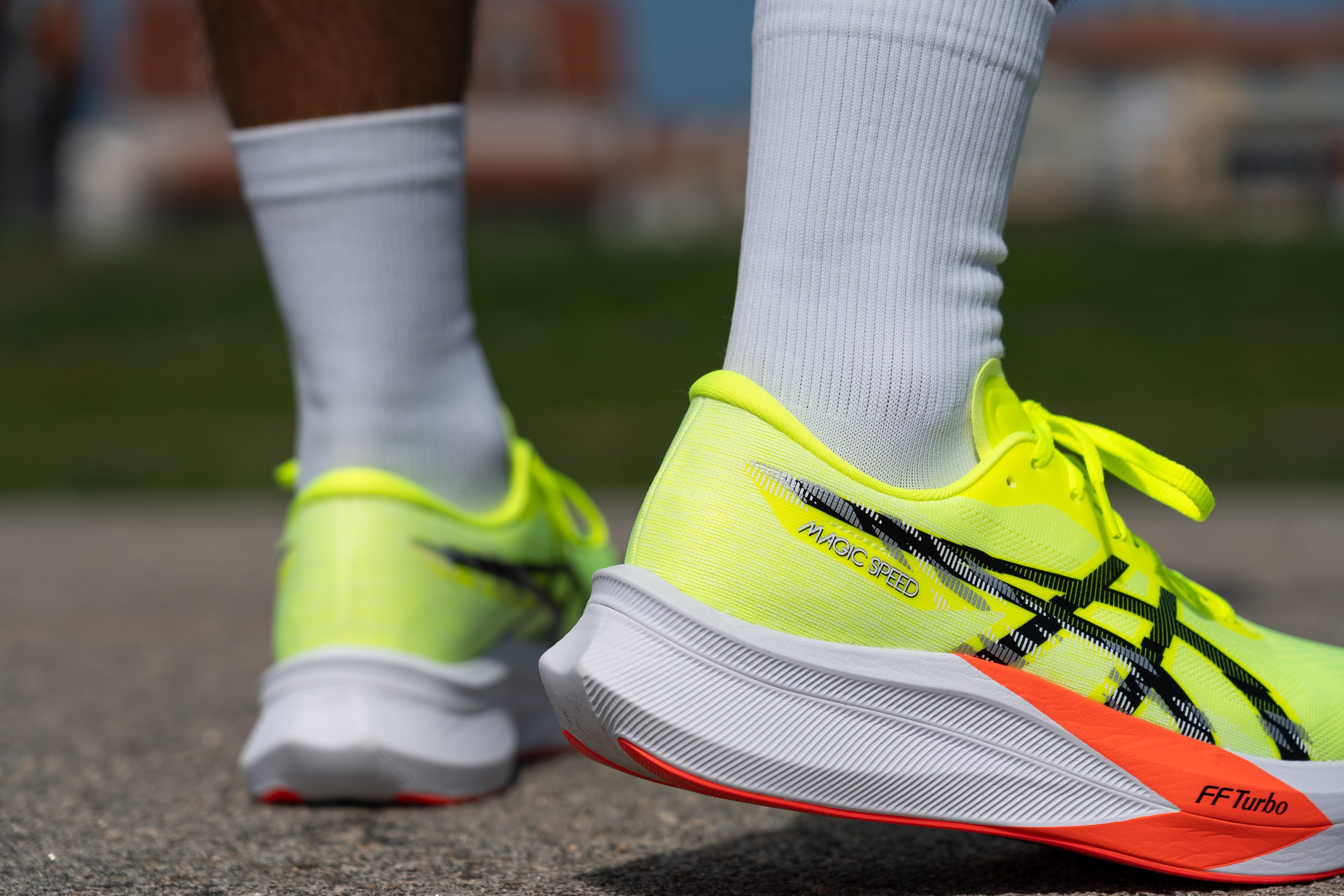
Additionally, its 42.5 mm stack height surpasses the World Athletics' road race limit of 40 mm. However, this shouldn't concern most runners, as those adhering to these regulations will likely opt for god-tier race-day-legal shoes like the Nike Alphafly 3 or the Hoka Rocket X 2, rather than a speed training model like this.

| Magic Speed 4 | 42.5 mm |
| Average | 34.8 mm |
Forefoot stack
The forefoot features substantial cushioning at 32.9 mm, comfortably surpassing the 30-mm mark.
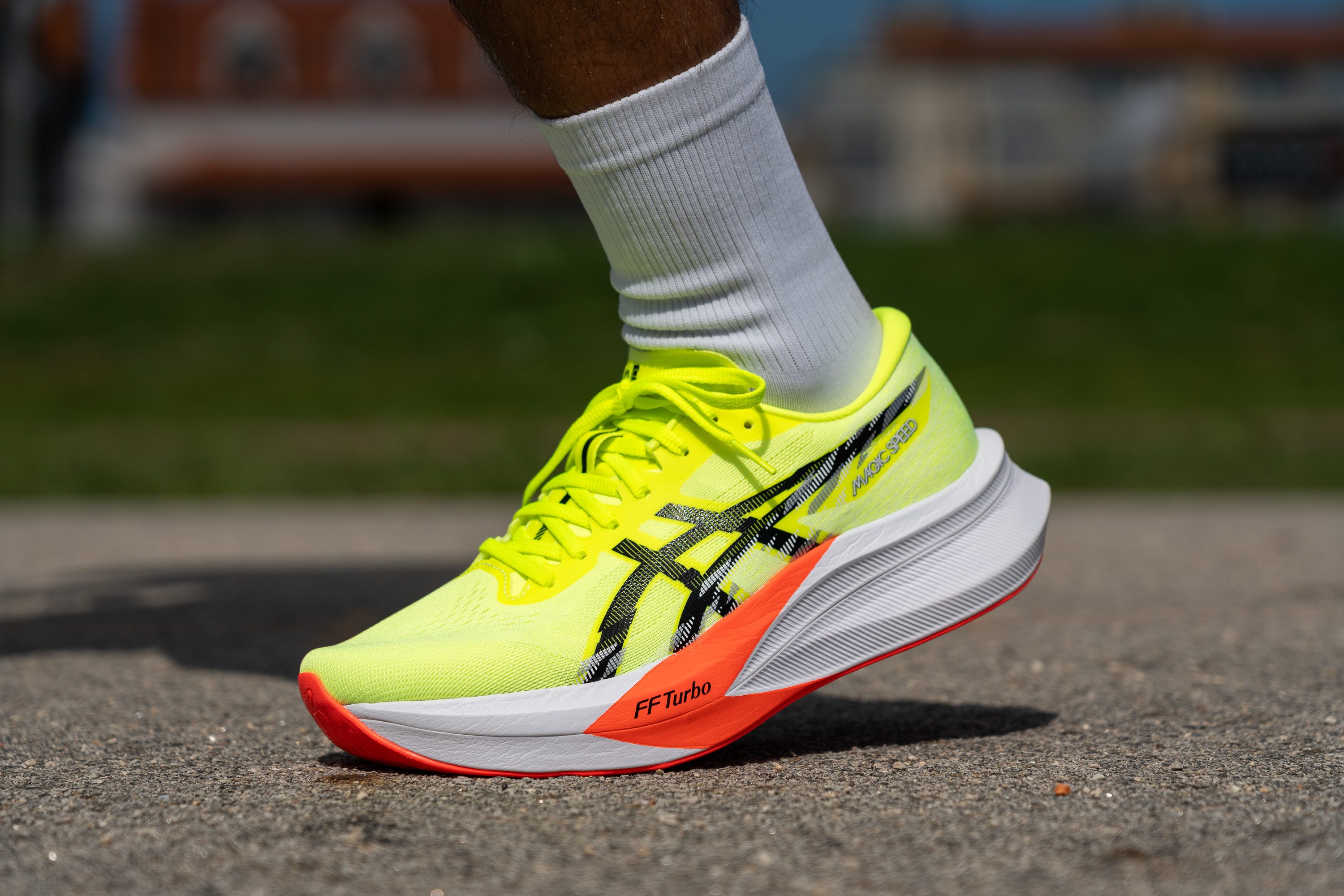
Coupled with the addition of FF Turbo and the carbon plate, we can highly recommend this shoe for midfoot and forefoot strikers alike.
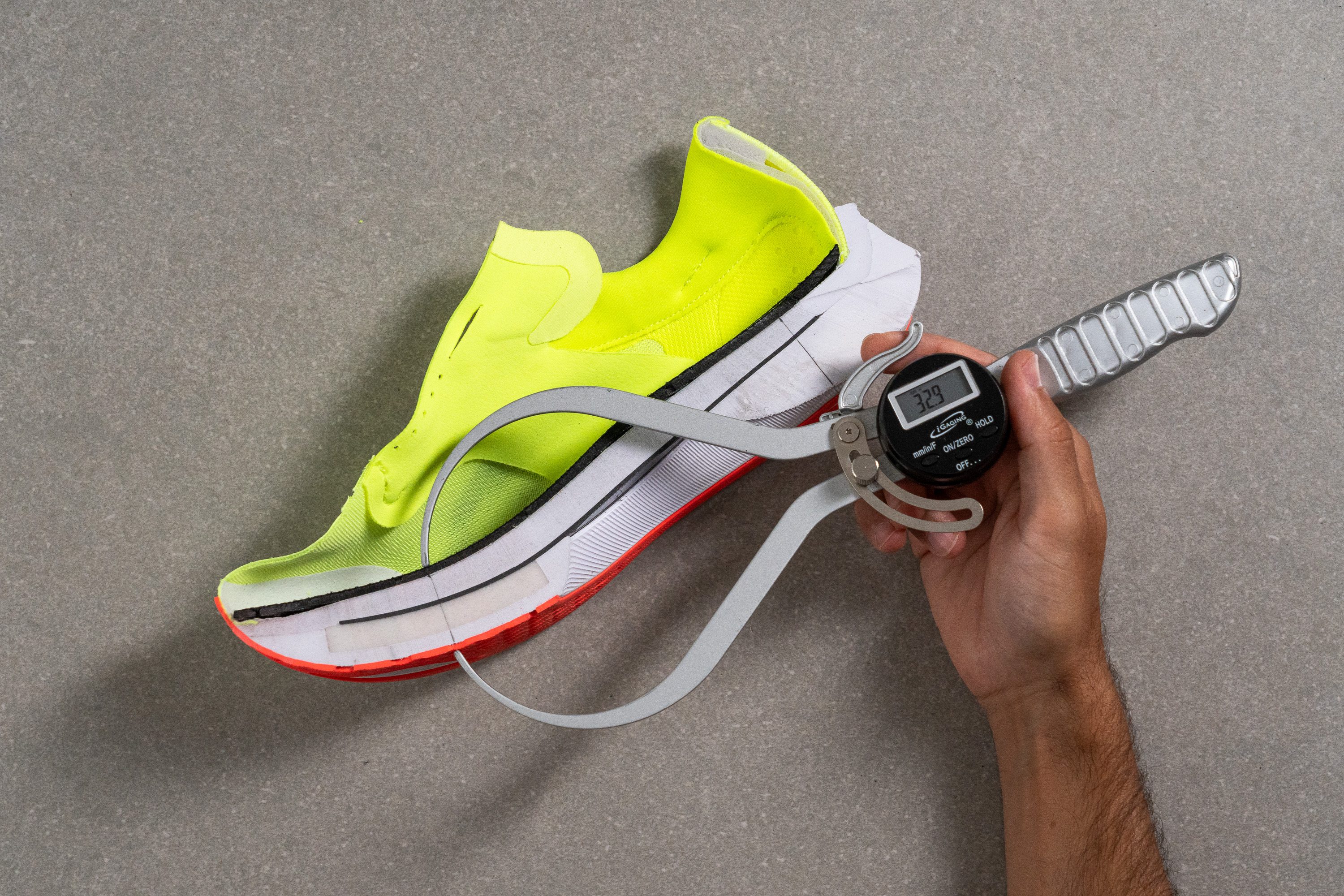
| Magic Speed 4 | 32.9 mm |
| Average | 26.2 mm |
Drop
Our two previous measurements uncovered that the Magic Speed 4 boasts a heel-to-toe drop of 9.6 mm, slightly above the 8 mm ASICS advertises.
This discrepancy is minor—only 1.5 mm, which is hardly noticeable.
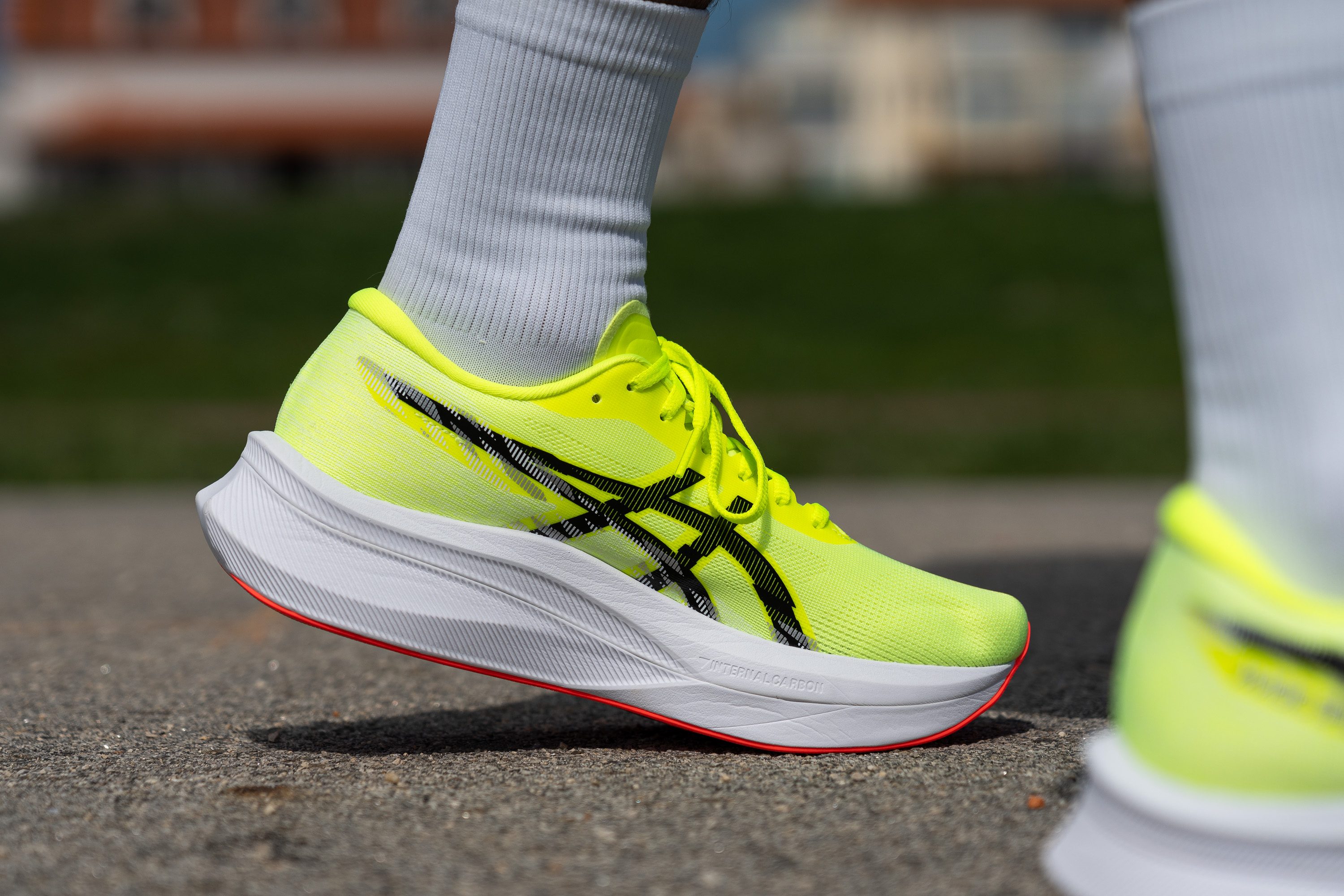
| Magic Speed 4 | 9.6 mm |
| Average | 8.6 mm |
Midsole softness
ASICS has designed a complex midsole featuring three different foams—two layers of FF Blast+ and one insert of FF Turbo. We'll examine each component, starting with the top layer situated above the carbon plate.
This top foam is the same FF Blast+ used in many of ASICS' most popular daily trainers, such as the Nimbus 26. We tested its plushness by pressing our durometer against it, registering a 14.9 HA. This layer provides significant comfort, effectively balancing the plate's inherent rigidity.

Should you expect massive bounce from FF Blast+? Not really, as we proved before in our energy return test. It's a mid-tier foam, providing a responsive ride but not on par with PEBA-based foams like ZoomX or PWRRUN PB. However, this aligns with our expectations, as this model isn't ASICS' premier running shoe.
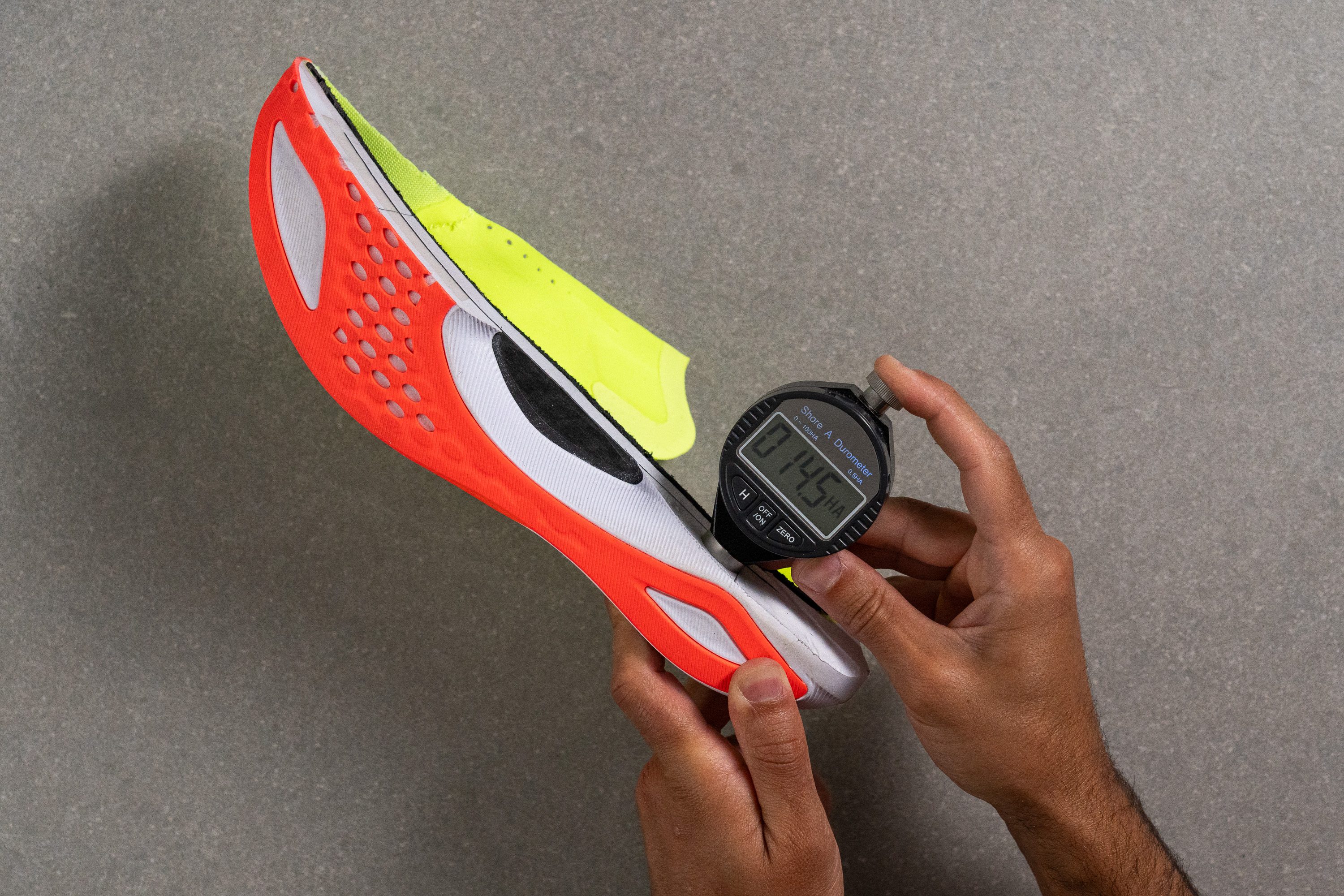
| Magic Speed 4 | 14.9 HA |
| Average | 20.4 HA |
Secondary foam softness
The secondary foam, positioned below the plate, is not FF Turbo but another layer of FF Blast+.
This layer is considerably denser, engineered for enhanced stability and durability. In fact, we measured its hardness at 18.1 HA, a difference that's definitely noticeable with every ground strike during a run.
This setup mirrors the classic dual-density configuration seen in supershoes like the Vaporfly since 2017—so, really, there’s nothing groundbreaking here.
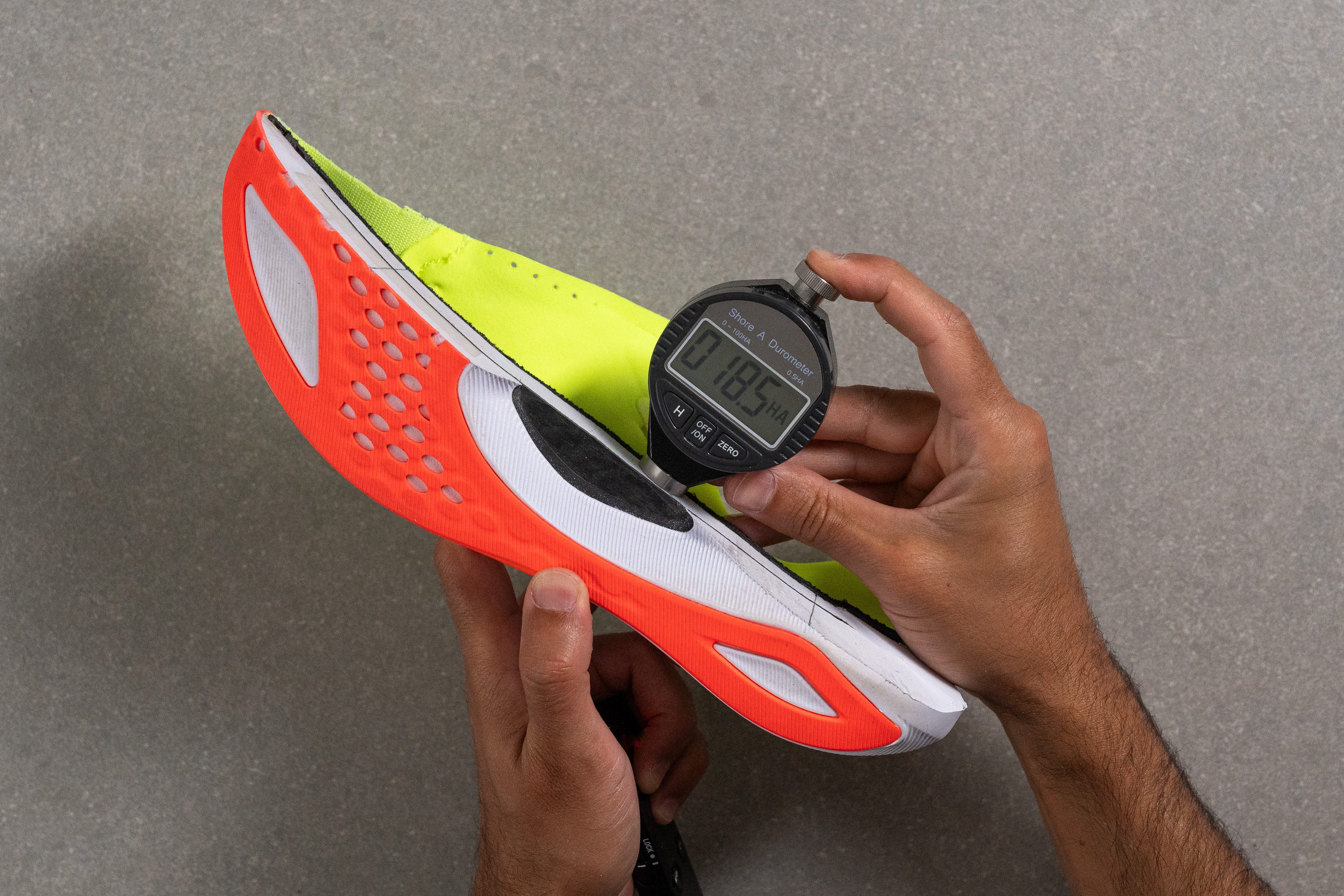
| Magic Speed 4 | 18.1 HA |
| Average | 22.7 HA |
Rocker
We discovered that the ASICS Magic Speed 4 boasts a significant meta-rocker, helping with turnover for midfoot and forefoot strikers.
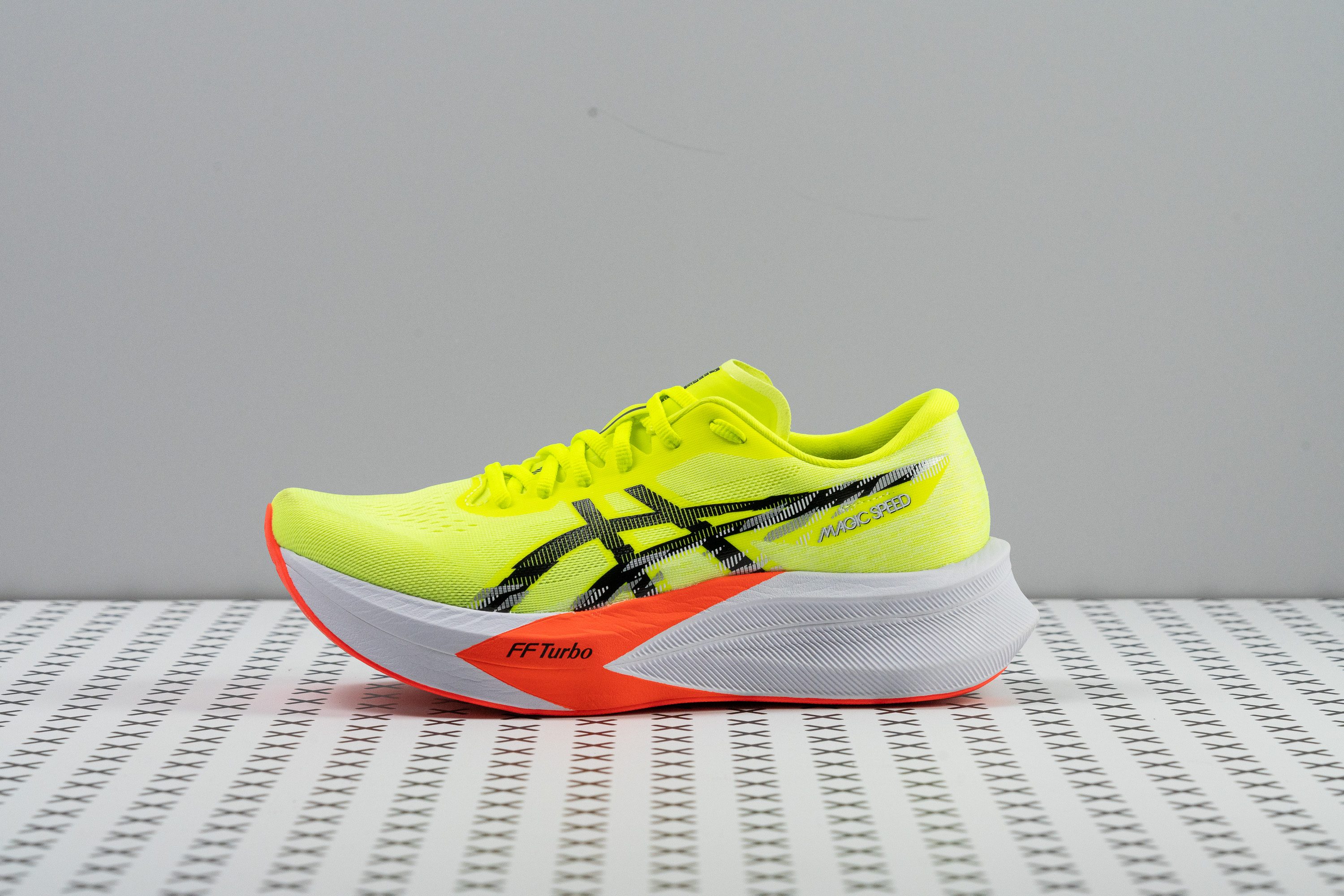
While its heel isn't as rockered as the Hoka Cielo X1, it strikes a balanced approach, optimizing it for faster paces where most runners naturally land more on their forefoot.
FF Turbo insert
For the first time in the Magic Speed series, ASICS has integrated FF Turbo foam. Finally!
This piece of nylon-based foam is positioned under the plate in the forefoot, offering an enhanced bounce over FF Blast+ that is especially noticeable for forefoot strikers.
Does this mark a significant change? Not really. This slab (17.0 HA) is too small to revolutionize the shoe, and we're hopeful that ASICS will incorporate a full-length layer of FF Turbo (or even FF Turbo+ if they don't mind) in future versions of the Magic Speed. For now, though, it's an improvement over previous models.
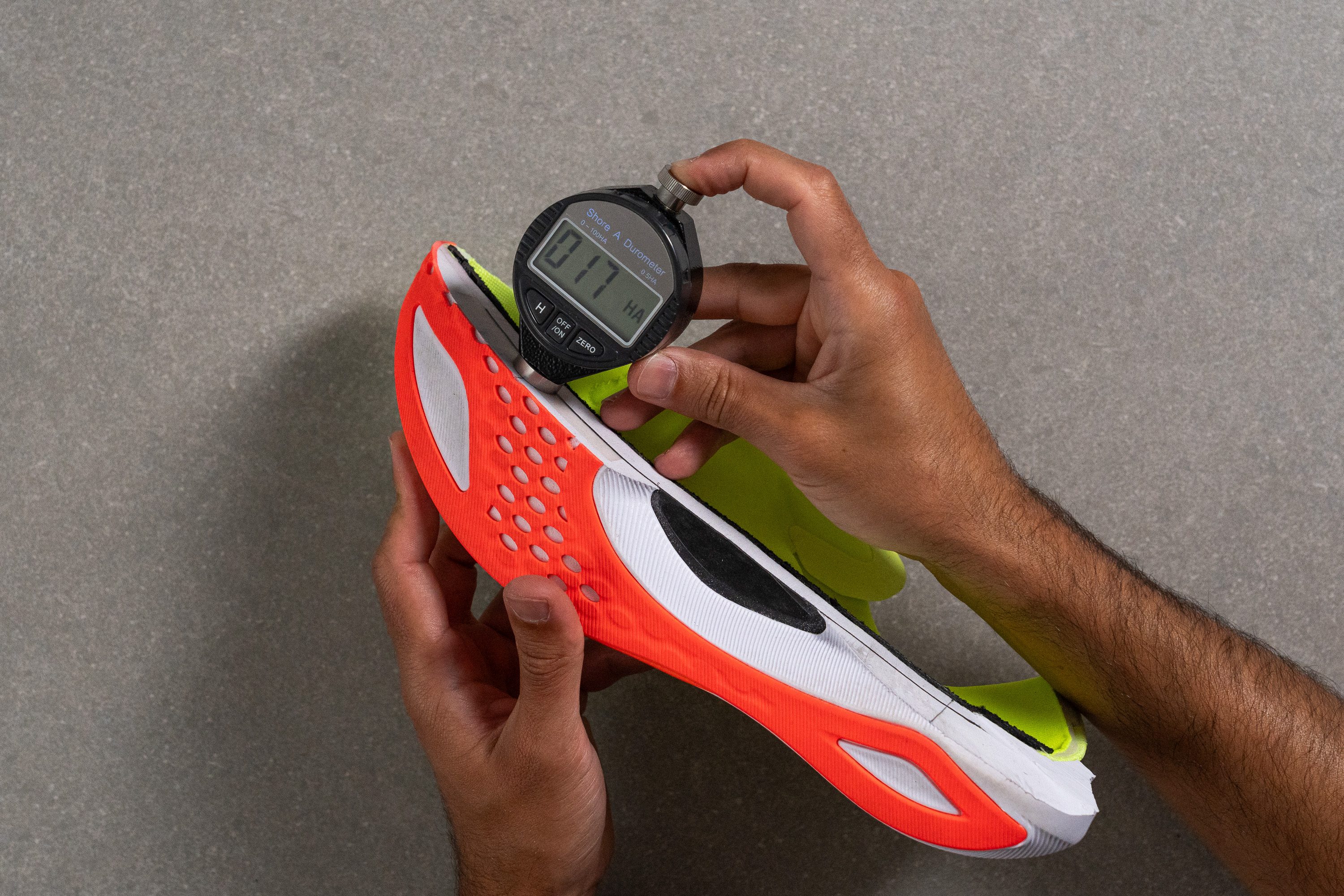
Plate
As we've previously noted, this supertrainer incorporates a carbon-fiber plate similar to those used in many of the world’s top marathon shoes. However, there’s a subtle twist—we discovered that ASICS adjusted it slightly for training, making it gentler on the calf muscles.
Indeed, it occupies a middle ground, more curved than the flat plate found in the Metaspeed Sky Paris but less so than the spoon-shaped plate in the Nike Vaporfly 3. It's distinctly curved in the forefoot, yet moderately so.
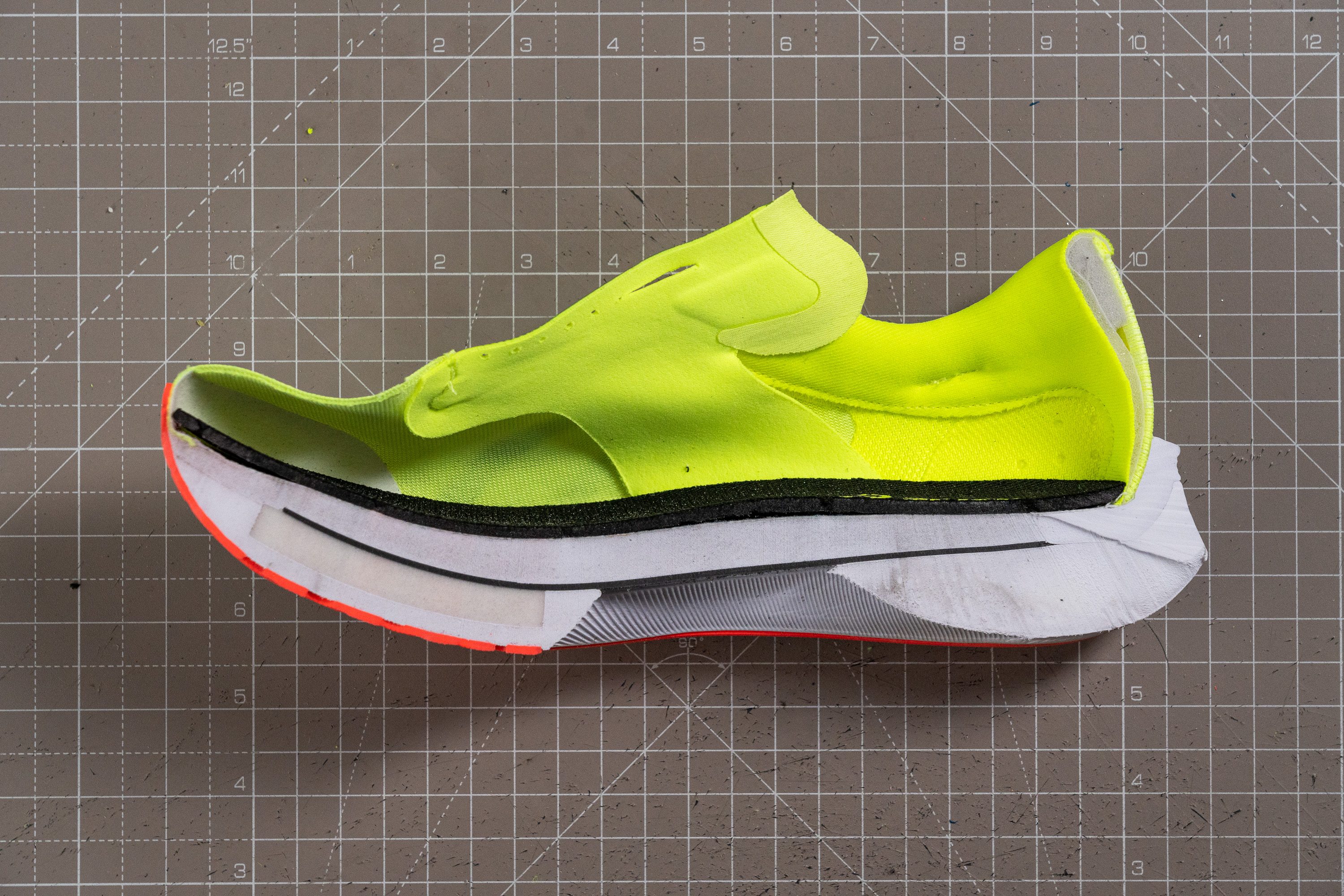
Size and fit
Size
ASICS Magic Speed 4 fits true to size (154 votes).
Width / Fit
The midsole is notably narrow for its category, and the fit is similarly snug. We experienced a fit akin to racing shoes—tightly embracing our feet and providing an exceptionally secure lockdown, though it offers little space, too.
For those who prefer more spacious uppers, the MS4 will disappoint. Measuring just 93.6 mm at its widest, it presents a decidedly narrow fit, take it or leave it. And sizing up won't remedy this; we think it's better to opt for a wider option, like the On Cloudmonster Hyper.

| Magic Speed 4 | 93.6 mm |
| Average | 95.1 mm |
Toebox width
Fortunately, we discovered that ASICS' designers generously shaped the toebox of the Magic Speed 4, which is decently rounded at 74.3 mm. This design is great for toe splay, and it also underscores the value of taking multiple measurements in the toebox area as we do.
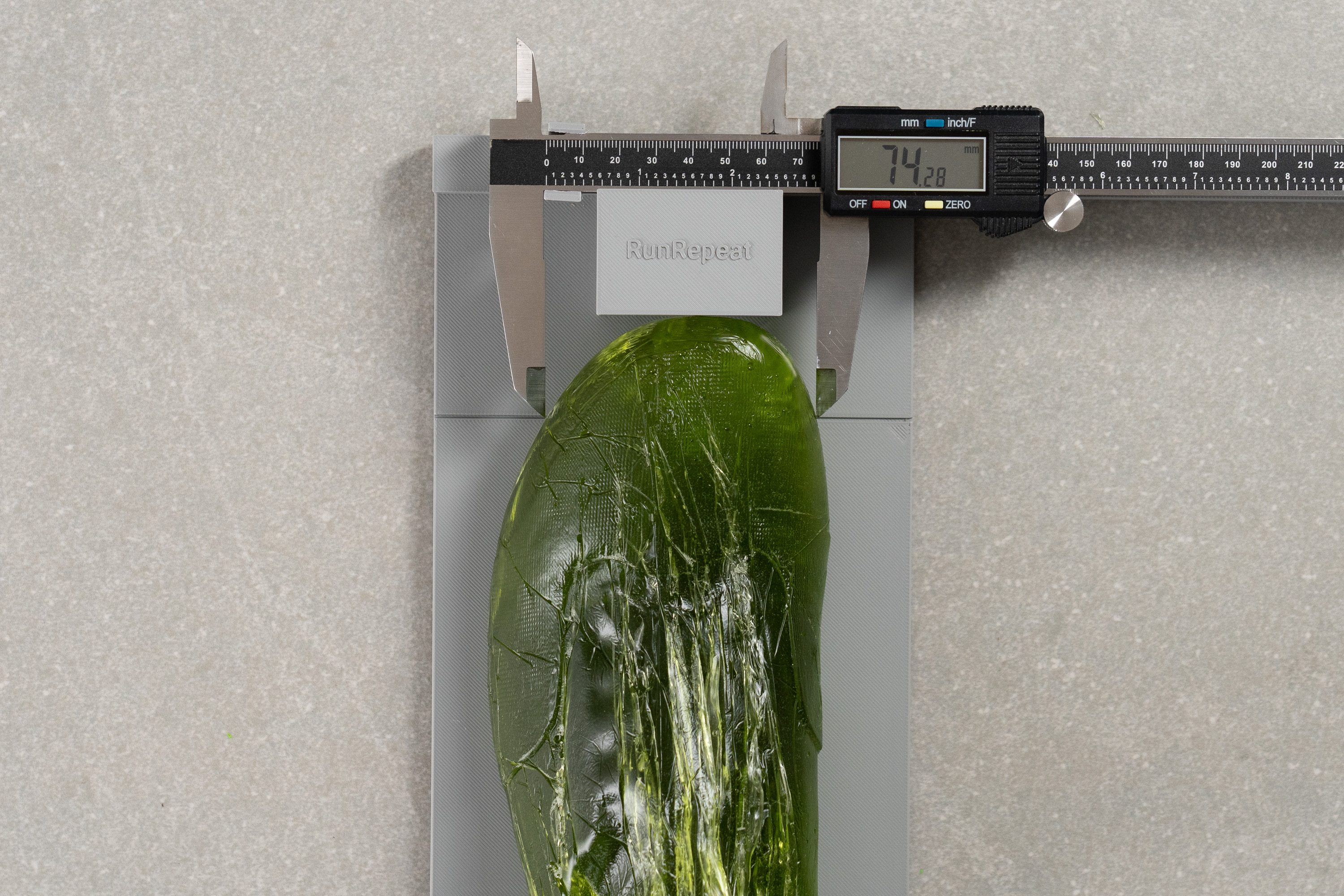
| Magic Speed 4 | 74.3 mm |
| Average | 73.2 mm |
Toebox height
Another nice feature of the Magic Speed 4's upper is its high vertical volume, which, like most recent ASICS shoes, we found to be quite satisfactory.
We hope other brands will adopt this design, as a low-volume upper can truly detract from an otherwise excellent shoe.
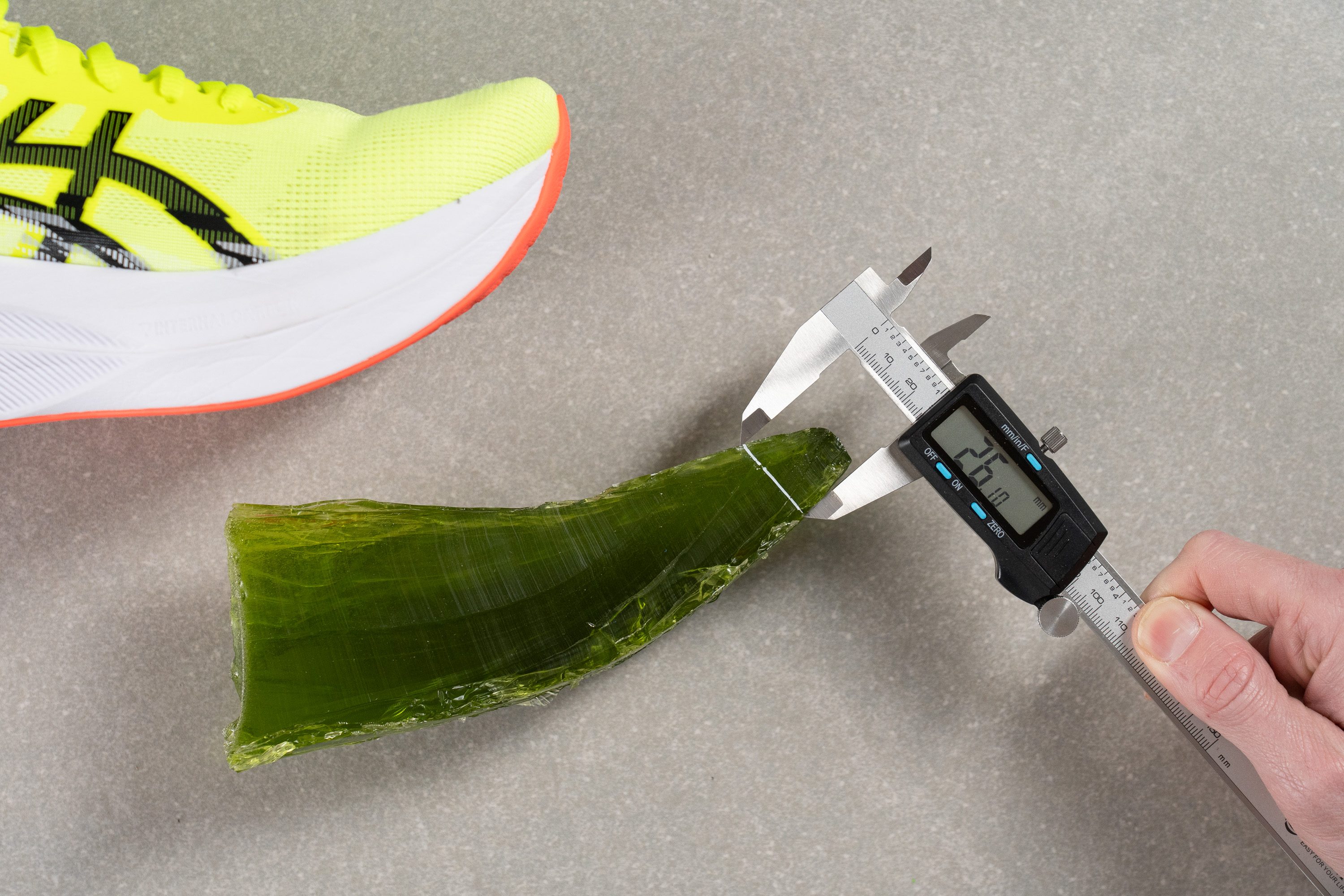
| Magic Speed 4 | 26.1 mm |
| Average | 27.1 mm |
Traction / Grip
Traction test
We’ve tested plenty of ASICSGRIP-based shoes in the lab and know this compound consistently delivers. Yet of course, we ran the Magic Speed 4 through our wet-condition test as well, and the outcome was once again nothing short of outstanding.
We recorded a coefficient of friction of 0.81—an ultra-grippy, rain-dominating score that few shoes in the market reach. And as you may guess, that kind of bite in the wet easily translates into first-class traction on dry pavement.
| Magic Speed 4 | 0.81 |
| Average | 0.48 |
Outsole design
The outsole of the Magic Speed 4 uses the same top-tier ASICSGRIP compound found in ASICS’ flagship models. We found the coverage to be excellent, much better than in the Metaspeed series. However, we don’t recommend it for gravel roads due to the central groove and exposed carbon plate.

Flexibility / Stiffness
Equipped with a carbon plate, we expected sky-high numbers in the bend test—and that’s exactly what we got: 26.5N. This is clearly above average and confirms a ultra-stiff ride similar to most supershoes.

| Magic Speed 4 | 26.5N |
| Average | 15.3N |
Weight
While the Magic Speed 3 was celebrated for its featherweight design at just 7.4 oz or 211g, the Magic Speed 4 unfortunately sees a weight increase, tipping the scales at 8.4 oz or 237g. Though still within the lightweight category, we understand that this increase could be a disappointment for some.
The added ounce primarily results from the boosted stack height—an acceptable trade-off for many runners. Now, let's delve into the cushioning details.
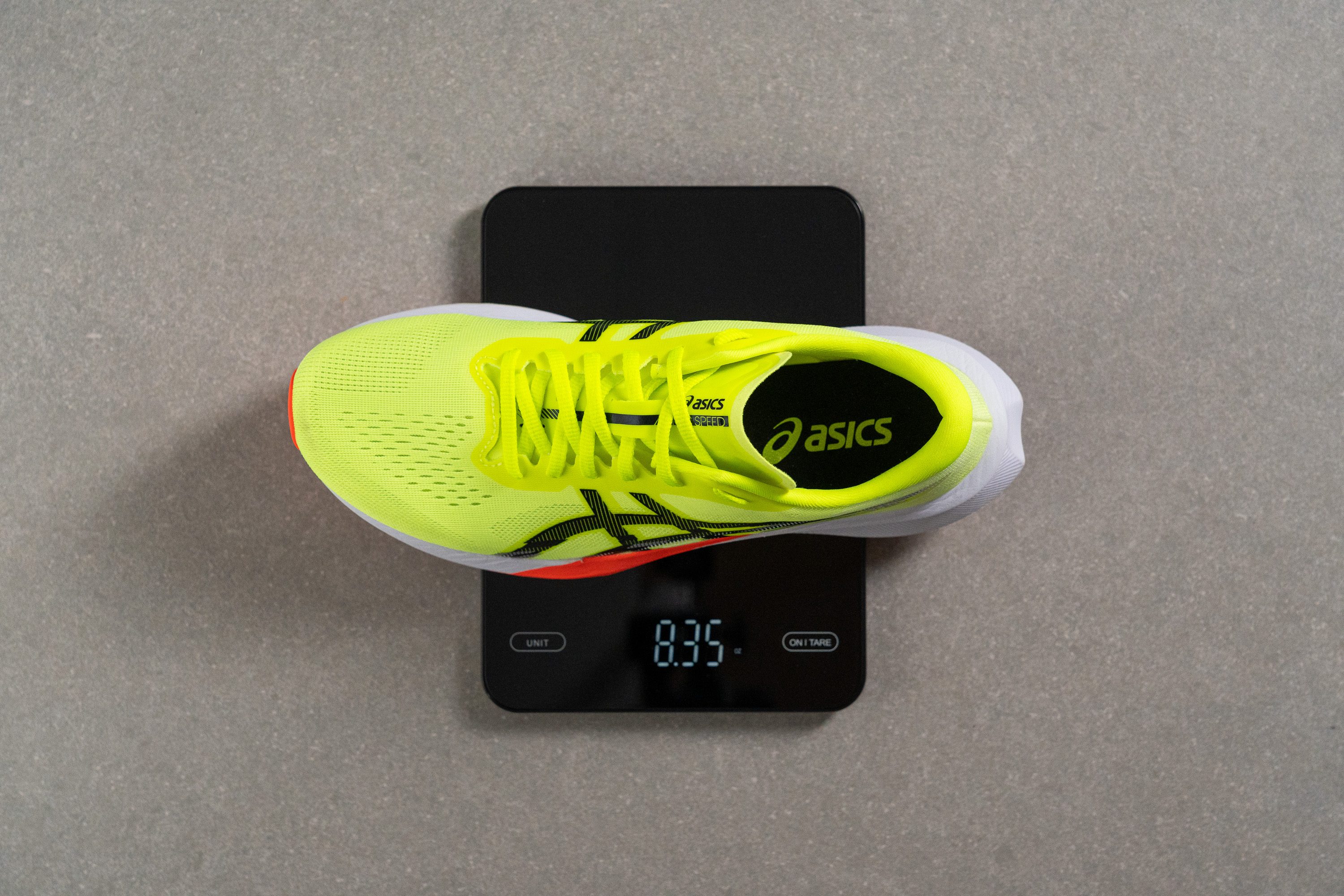
| Magic Speed 4 | 8.4 oz (237g) |
| Average | 9.3 oz (264g) |
Breathability
In our humble opinion, ASICS is excelling with their latest upper designs, introducing asymmetrical patterns to enhance airflow while achieving exceptional breathability.
The Magic Speed 4 shines as a prime example, earning a perfect 5-out-of-5 score in our smoke test for its superbly ventilated toebox area.
With a light, we pinpointed the thinnest areas of the engineered mesh upper—not just in the toebox but also along the sides, enhancing breathability, though this slightly reduces stability, as we will show later in this lab review.

We then examined the upper under a microscope and noted that ASICS employs a classic engineered mesh with tiny openings, backed by a secondary thin fabric layer.
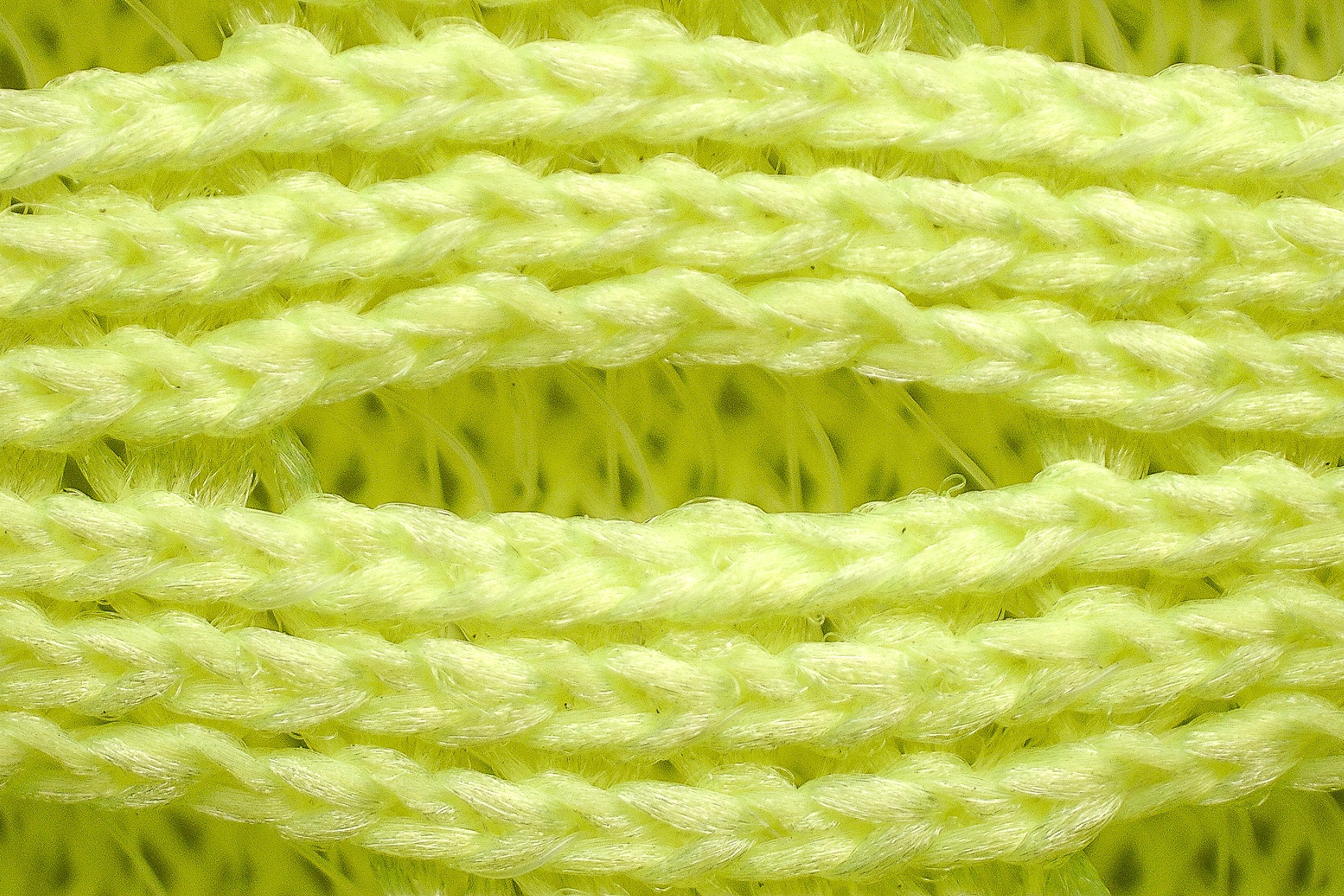
The upper is notably stretchy, comfortable, and aesthetically pleasing too! We also found that it's mostly seamless in critical areas, suggesting that it could comfortably be worn without socks—a definite improvement over its predecessor.
| Magic Speed 4 | 5 |
| Average | 3.7 |
Stability
Lateral stability test
While the Magic Speed 3 wasn't exactly known for superior stability, the fourth iteration has taken an even steeper dive in this department—a more significant downgrade than even its weight.
The Magic Speed 4 is taller and retains its narrow build and pliable heel counter, resulting in reduced stability, making it suitable only for neutral runners. Thus, we strongly advise anyone needing support to steer clear of the MS4!
Torsional rigidity
With the Magic Speed 4 featuring a carbon plate rather than the nylon plate found in other supertrainers, we anticipated a max score in our manual assessment—and it earned a 5/5.
However, its extremely stiff underfoot feel makes it less than ideal for easy runs. Clearly, while maybe it's not entirely magical, the shoe is built for speed.
| Magic Speed 4 | 5 |
| Average | 3.5 |
Heel counter stiffness
We discovered that ASICS added extra padding to the heel counter of the Magic Speed 4, aiming to boost comfort beyond that of a typical competition shoe. However, the heel remains exceptionally pliable, offering minimal resistance to pressure and scoring just 1 out of 5 in our tests.
| Magic Speed 4 | 1 |
| Average | 2.9 |
Midsole width - forefoot
Further proof of the Magic Speed 4's lack of support can be seen in the dimensions of its midsole—our measurements showed only 109.6 mm in the forefoot.
This is notably narrower compared to most supertrainers, reinforcing that this model is really only suitable for runners with a perfect neutral stride.

| Magic Speed 4 | 109.6 mm |
| Average | 114.4 mm |
Midsole width - heel
The same issues affect heel strikers with the MS4, as it proves to be slightly narrower than most running shoes at 87.4 mm. While this isn't a major concern and does enhance its agility, we think that for training purposes, a bit more width in this area would be beneficial, especially for long run workouts.
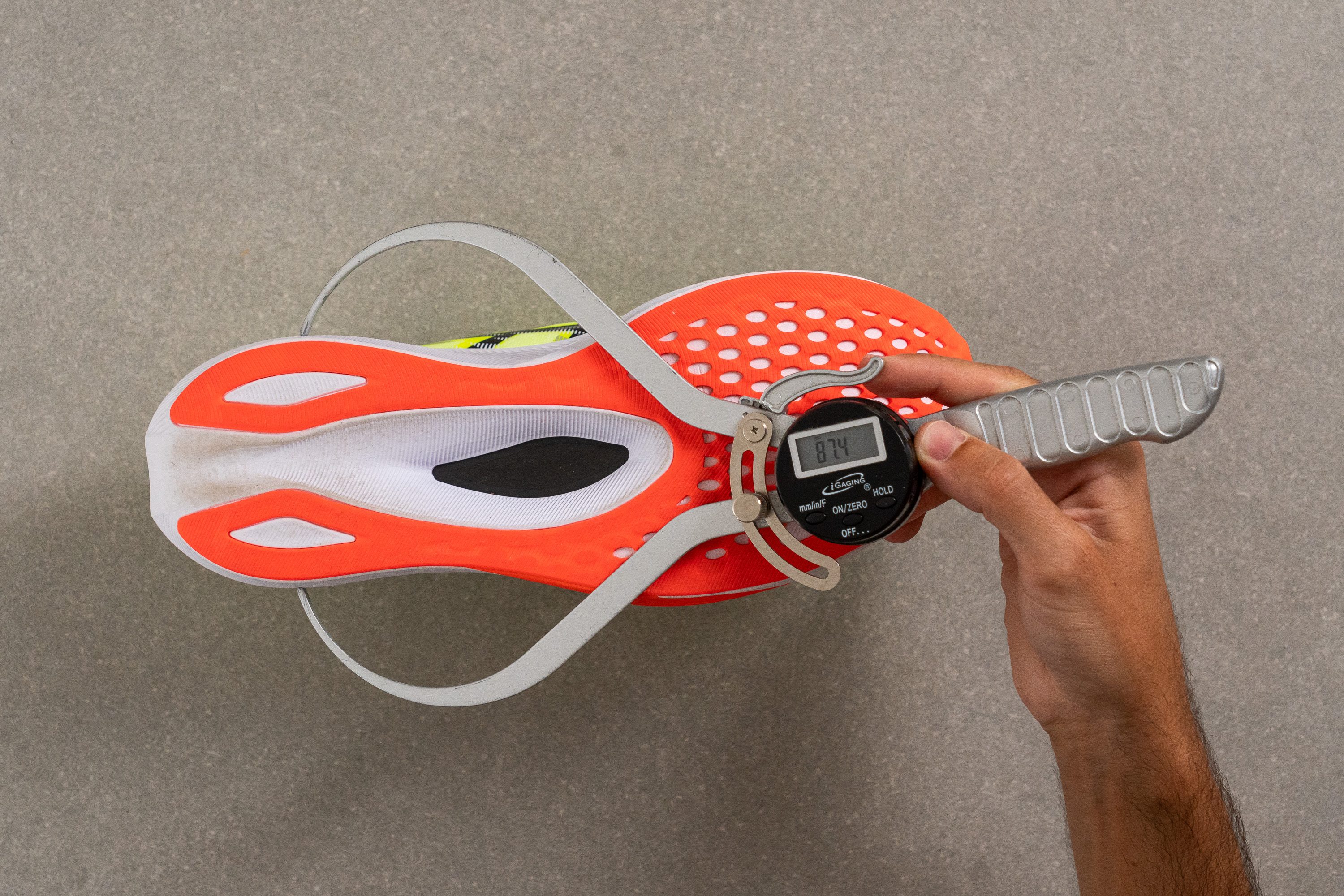
| Magic Speed 4 | 87.4 mm |
| Average | 90.7 mm |
Durability
Toebox durability
After confirming fantastic airflow in the toebox area, we next evaluated the upper's durability—essential for a shoe priced well over 150 bucks.
We were pleased to find it exceptionally durable at 4/5 in our books—the asymmetrical design we discussed earlier really shines here. ASICS intelligently placed numerous ventilation holes on the outer side while keeping the inner side denser to enhance durability and prevent damage from the big toe.

| Magic Speed 4 | 4 |
| Average | 2.6 |
Heel padding durability
There's always some concern about the durability of tempo running shoes, particularly in areas like the heel collar. However, our fierce testing with a Dremel tool alleviated these worries.
We found that the heel collar is well padded and durable, earning a solid 4 out of 5 here in the lab. This fantastic score provides reassurance that the shoe will withstand wear without any issues.
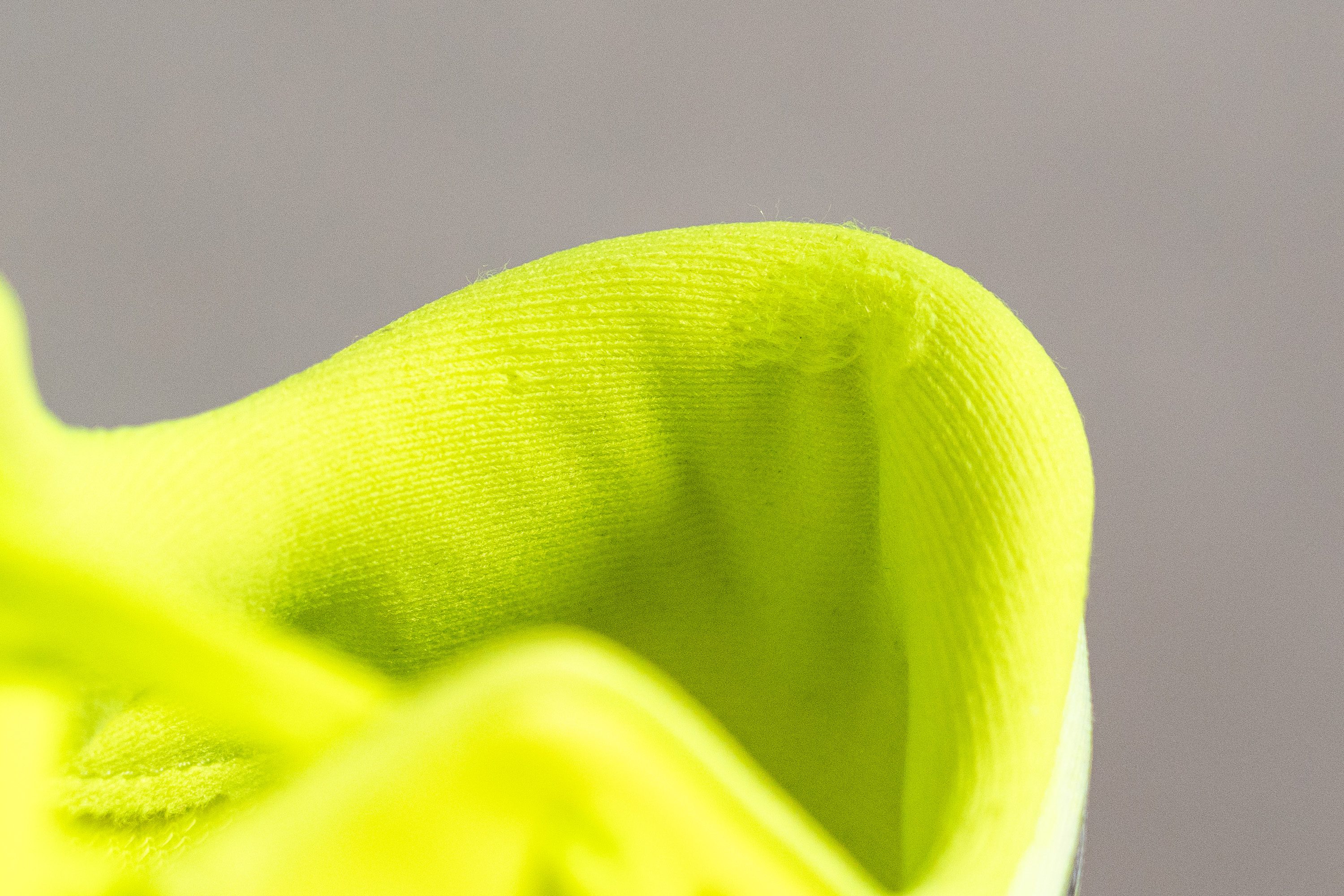
| Magic Speed 4 | 4 |
| Average | 3.4 |
Outsole durability
We conducted our durability test on the outsole of the Magic Speed 4 by setting our Dremel to 10K RPM to replicate extreme wear conditions.
Remarkably, the damage was minimal, with only a 0.9 mm indentation measured with our tread depth gauge. Though other supertrainers have exhibited superior durability, this wear on such a soft rubber compound is truly impressive!
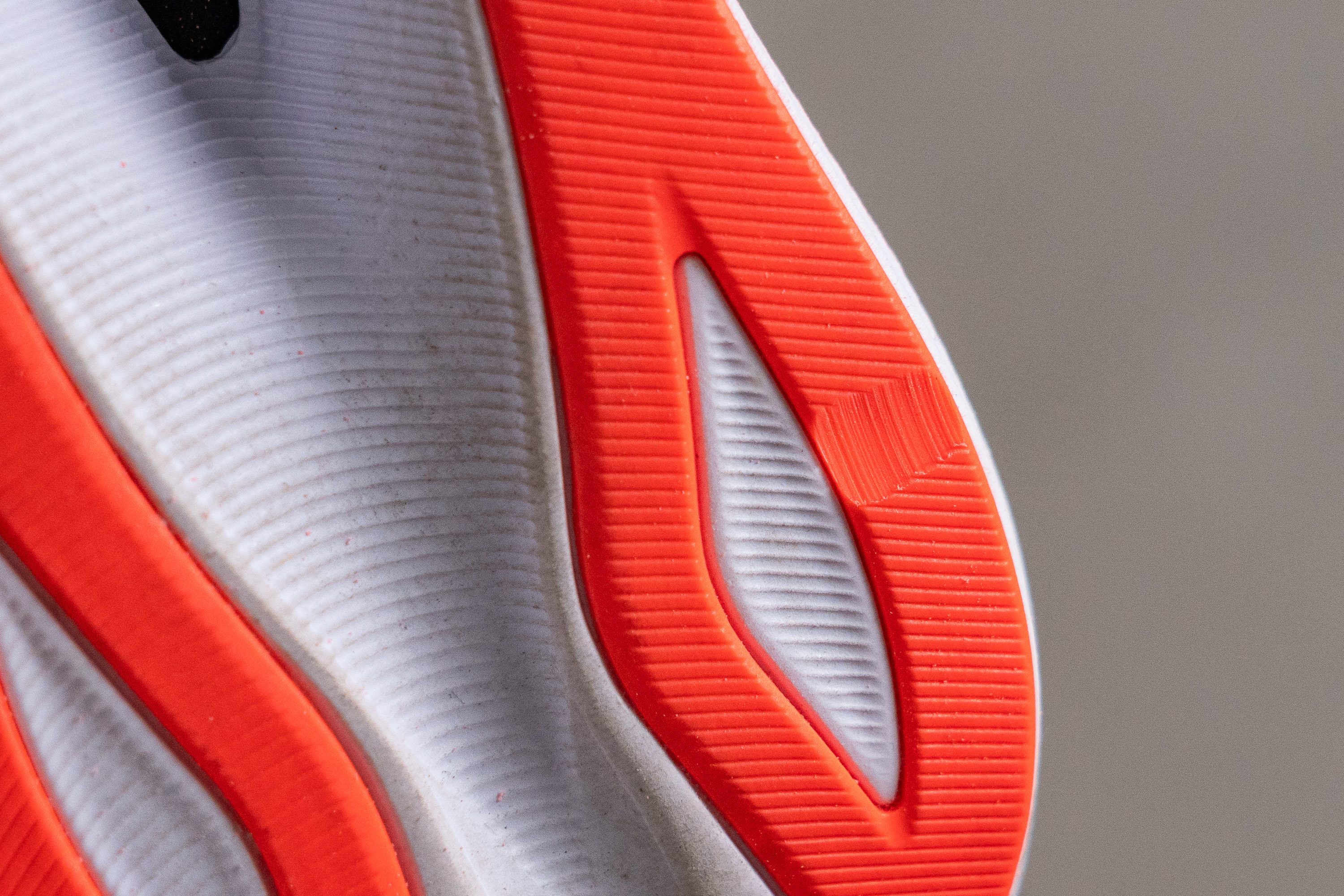
| Magic Speed 4 | 0.9 mm |
| Average | 1.1 mm |
Outsole thickness
To ensure robustness, ASICS opted for a 2.4 mm thickness in the outsole of the MS4, surpassing the standard for most supershoes.
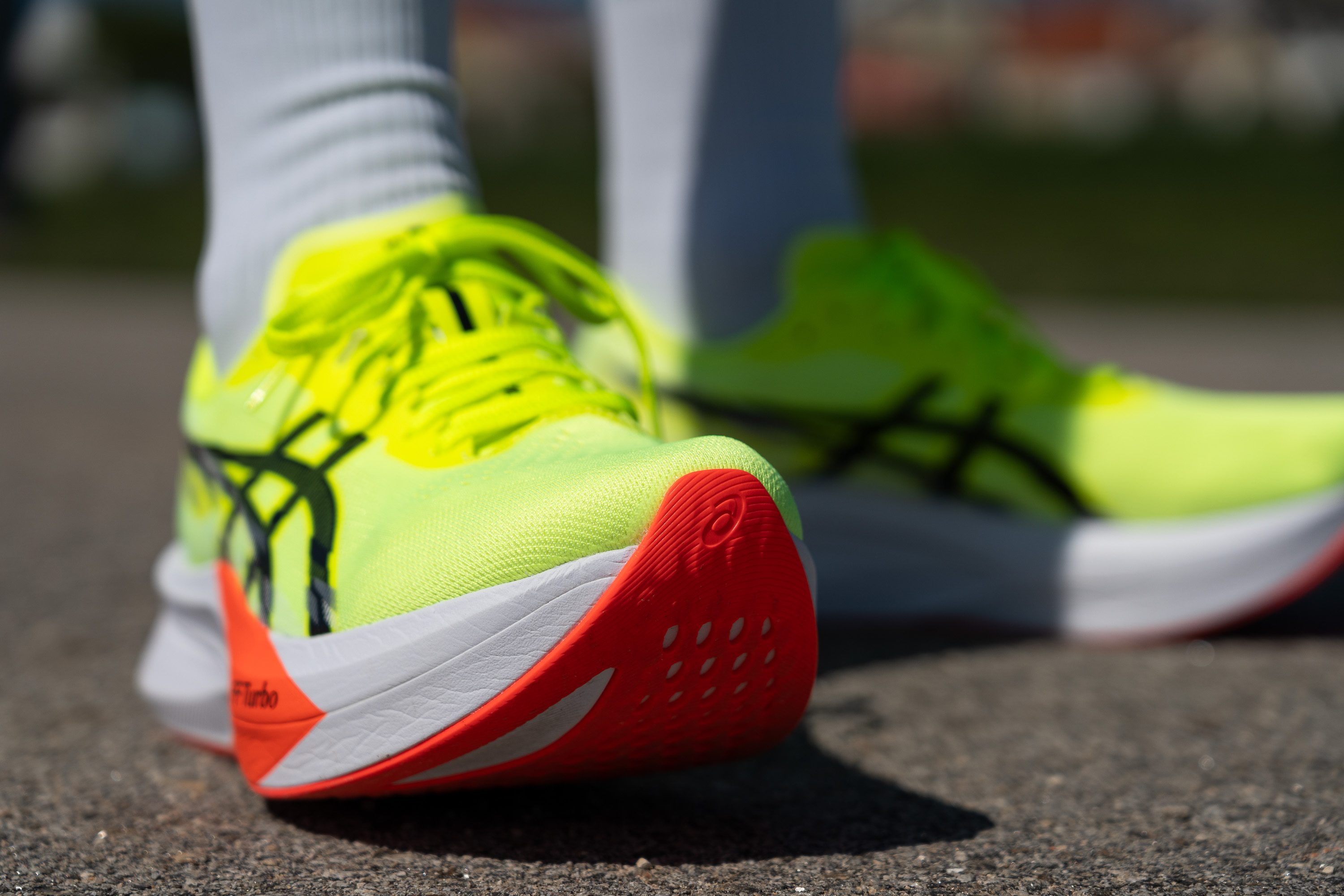
This positions the Magic Speed 4 as a superb choice for those wanting the stiff ride of a carbon plate-enhanced shoe without the ultra-high cost, and with added durability in the outsole.
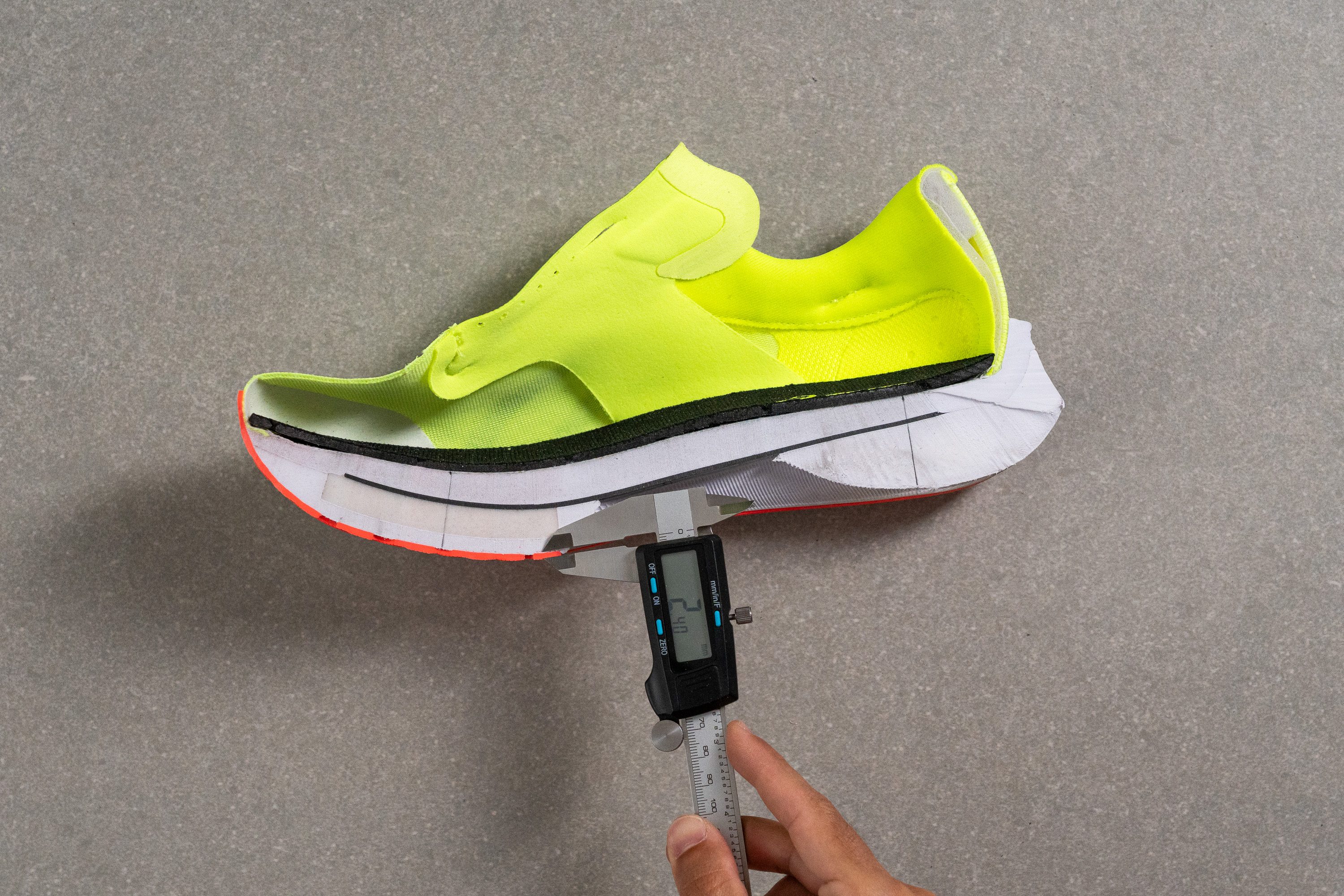
| Magic Speed 4 | 2.4 mm |
| Average | 3.2 mm |
Misc
Insole thickness
The insole is noticeably thinner than what we typically encounter in our lab tests, and we like it. Given the shoe's towering height, adding even more millimeters with the insole doesn't seem like a good choice.
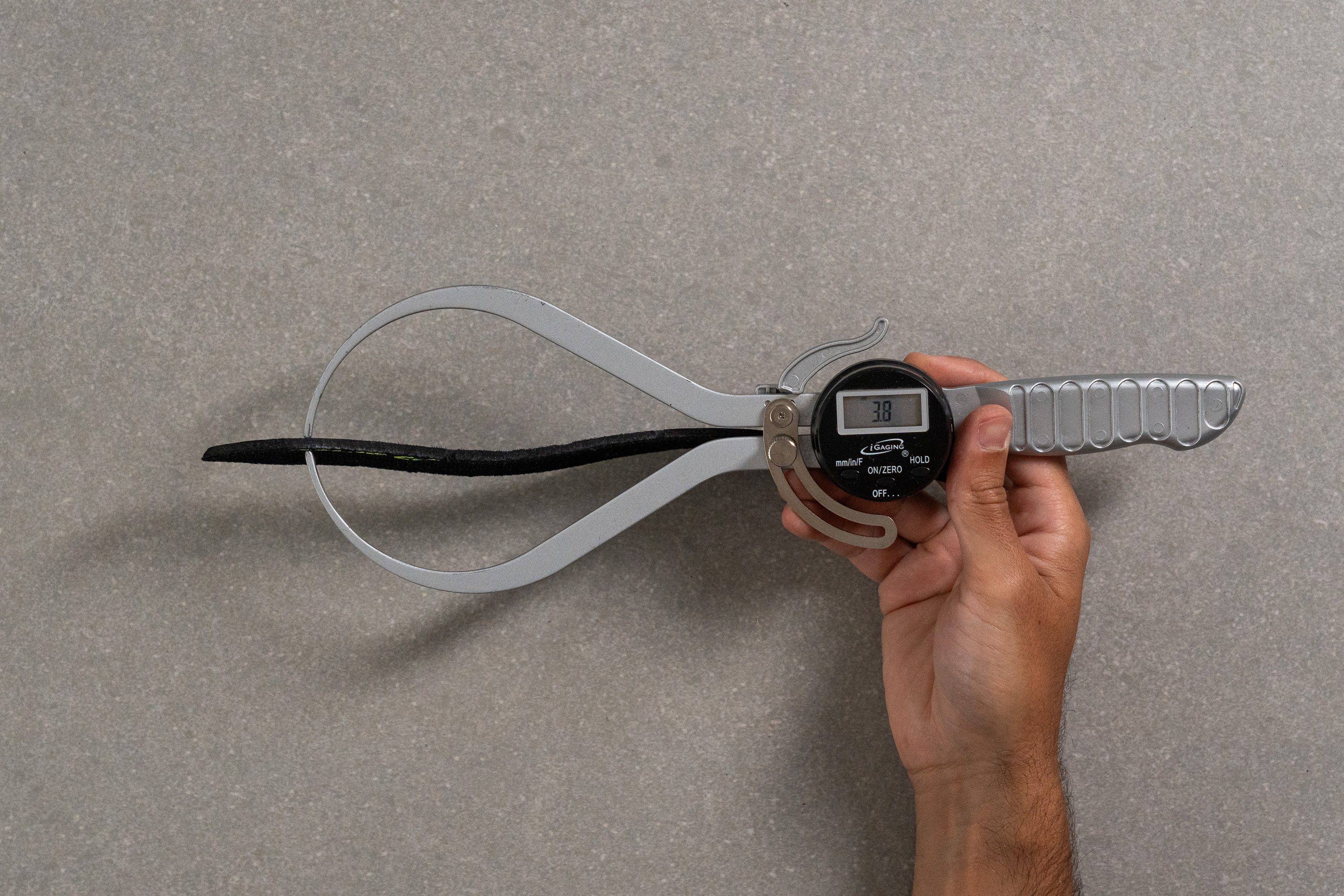
| Magic Speed 4 | 3.8 mm |
| Average | 4.5 mm |
Removable insole
Our tests revealed that ASICS designed this insole without gluing them to the last, a feature that offers flexibility for those who prefer or need custom footbeds.
Despite this, we recommend keeping the stock insole—it's a premium one with perforations that enhance heat dissipation.
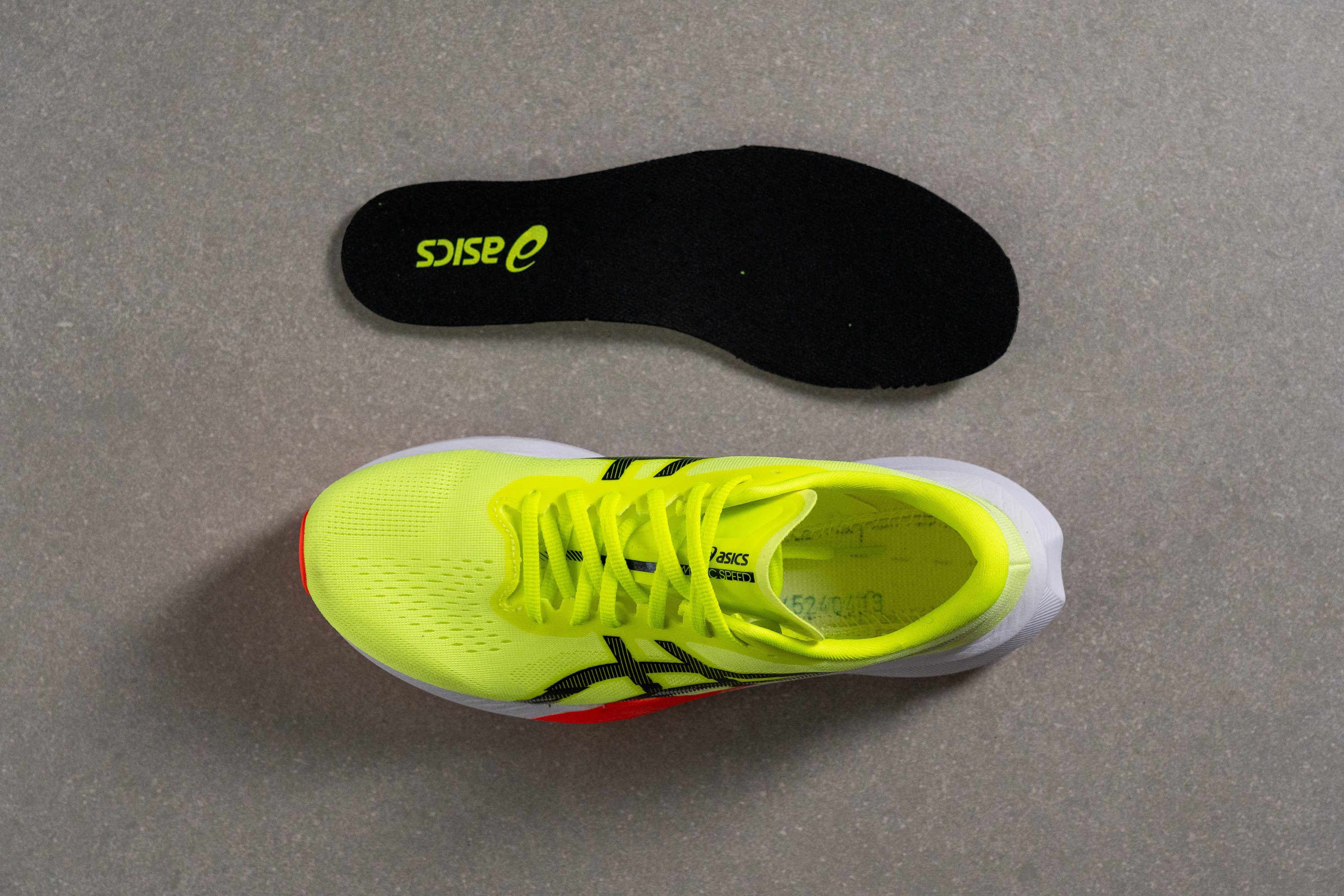
| Magic Speed 4 | Yes |
Midsole softness in cold (%)
FF Blast+, though based on EVA, is enhanced with Olefin Block Co-Polymers (OBC) which boost its performance, particularly in cold temperatures. Impressively, we noted only a 15.8% variance in softness between our standard room-temperature test and after chilling the shoe for 20 minutes in the freezer. Amazing!
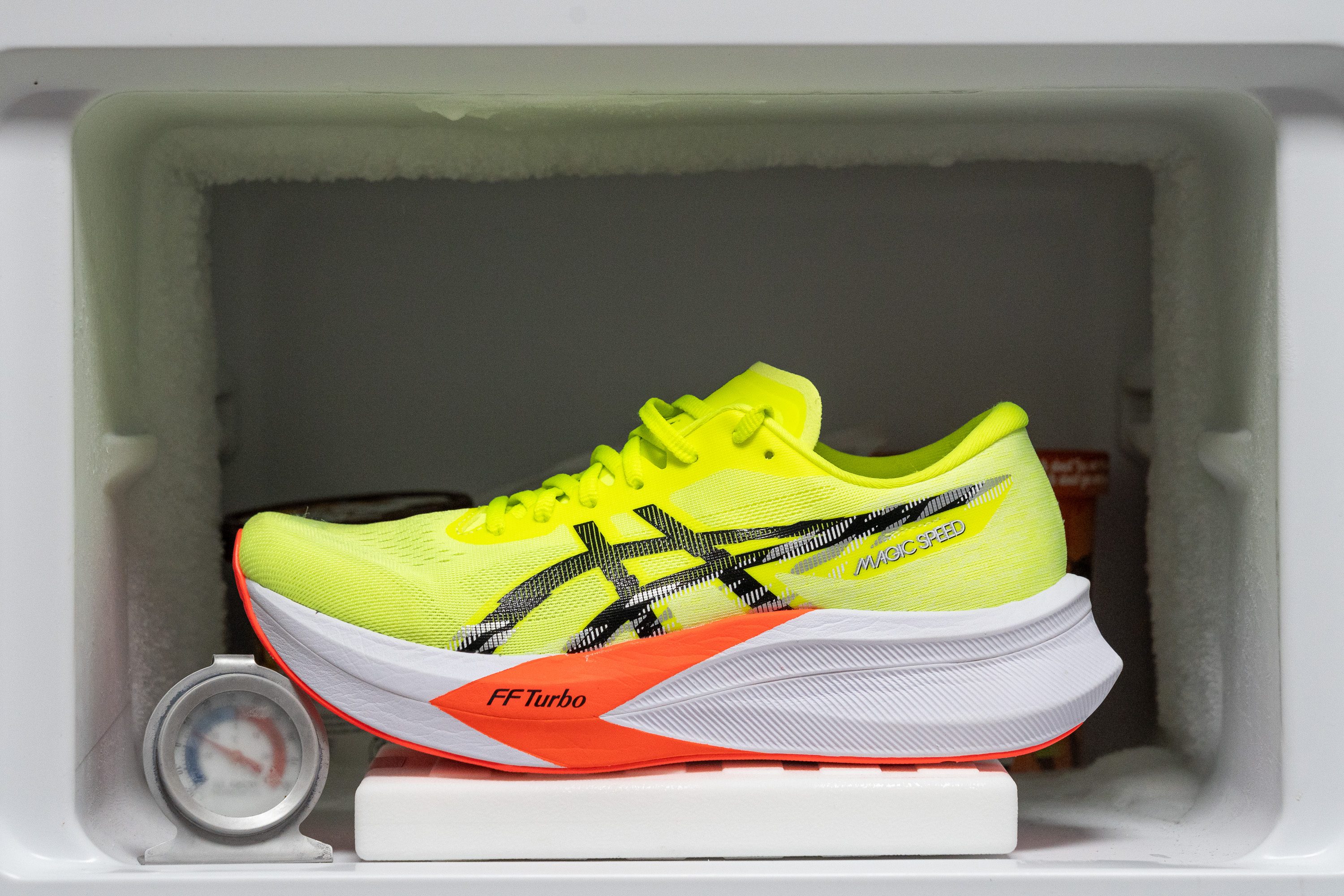
| Magic Speed 4 | 16% |
| Average | 24% |
Reflective elements
The Magic Speed 4 lacks any reflective elements on the entire upper.
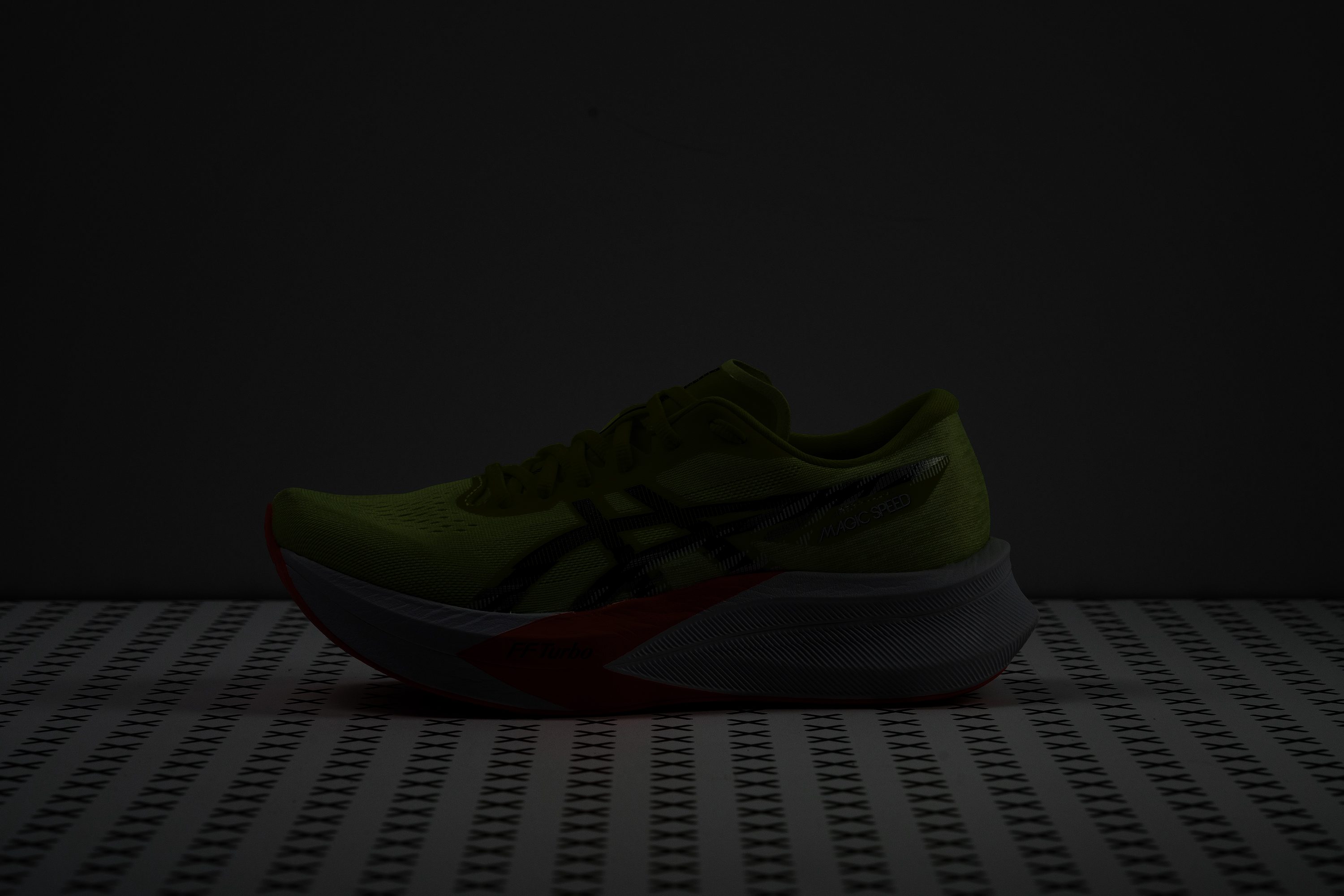
| Magic Speed 4 | No |
Tongue padding
The Magic Speed 4's tongue is exceptionally thin, equipped with just 1.0 mm of padding—offering minimal protection across the instep and aligning with the lightest competition shoes on the market.
It clear to us that ASICS, in an effort to reduce weight elsewhere due to the added cushioning in the midsole, significantly minimized the tongue's bulk from v3 (2.9 mm), which noticeably impacted comfort.

| Magic Speed 4 | 1.0 mm |
| Average | 5.8 mm |
Tongue: gusset type
This was definitely a delightful surprise—a subtle hint from ASICS suggesting that they still view the Magic Speed 4 more as a training shoe than a racing option. We think this because the Japanese brand typically reserves semi-gusseted tongues for their training shoes, and they've used this design in the Magic Speed 4.
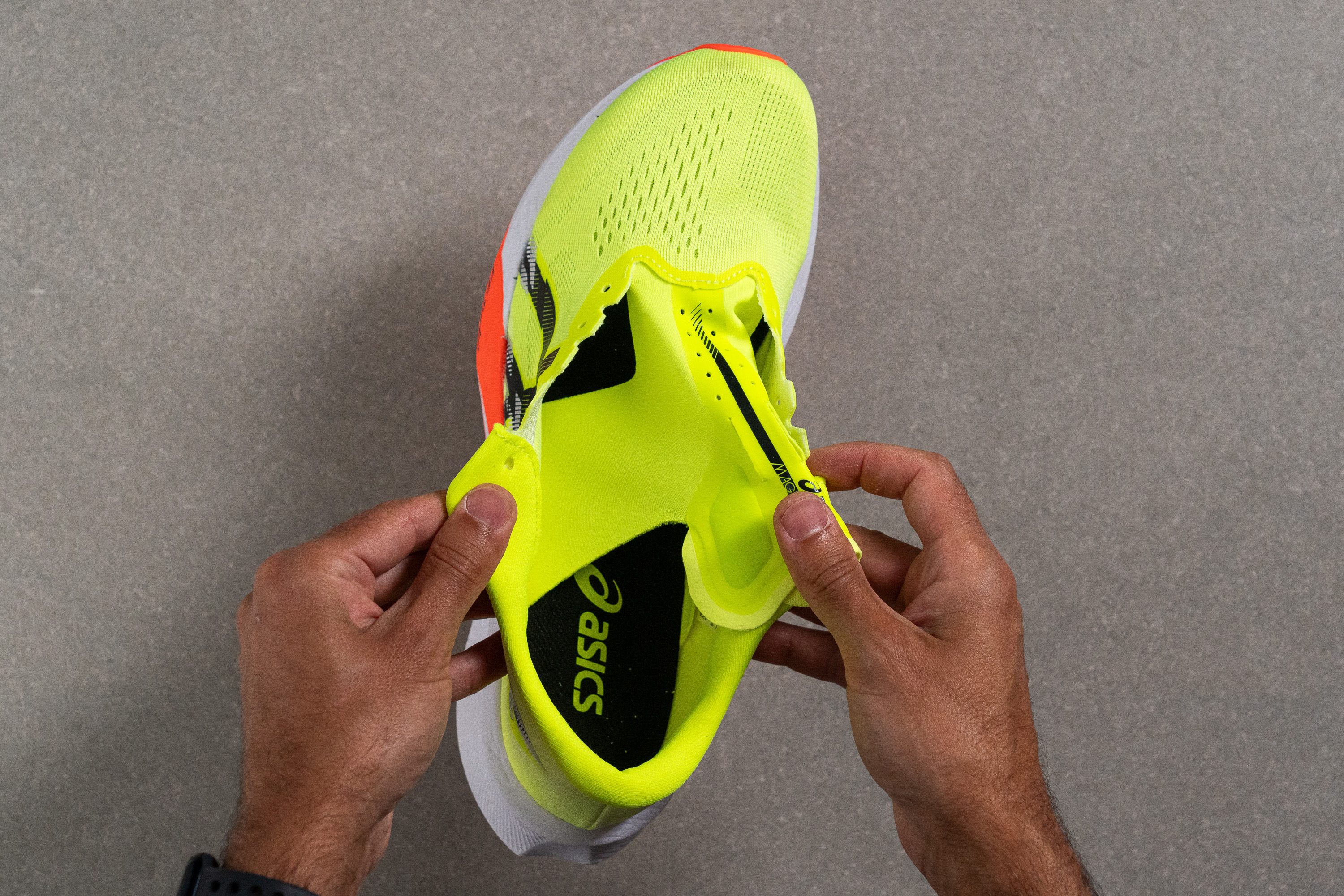
| Magic Speed 4 | Both sides (semi) |
Heel tab
We discovered that ASICS opted to mirror the heel design of the Metaspeed series, meaning it completely lacks a finger-loop tab.
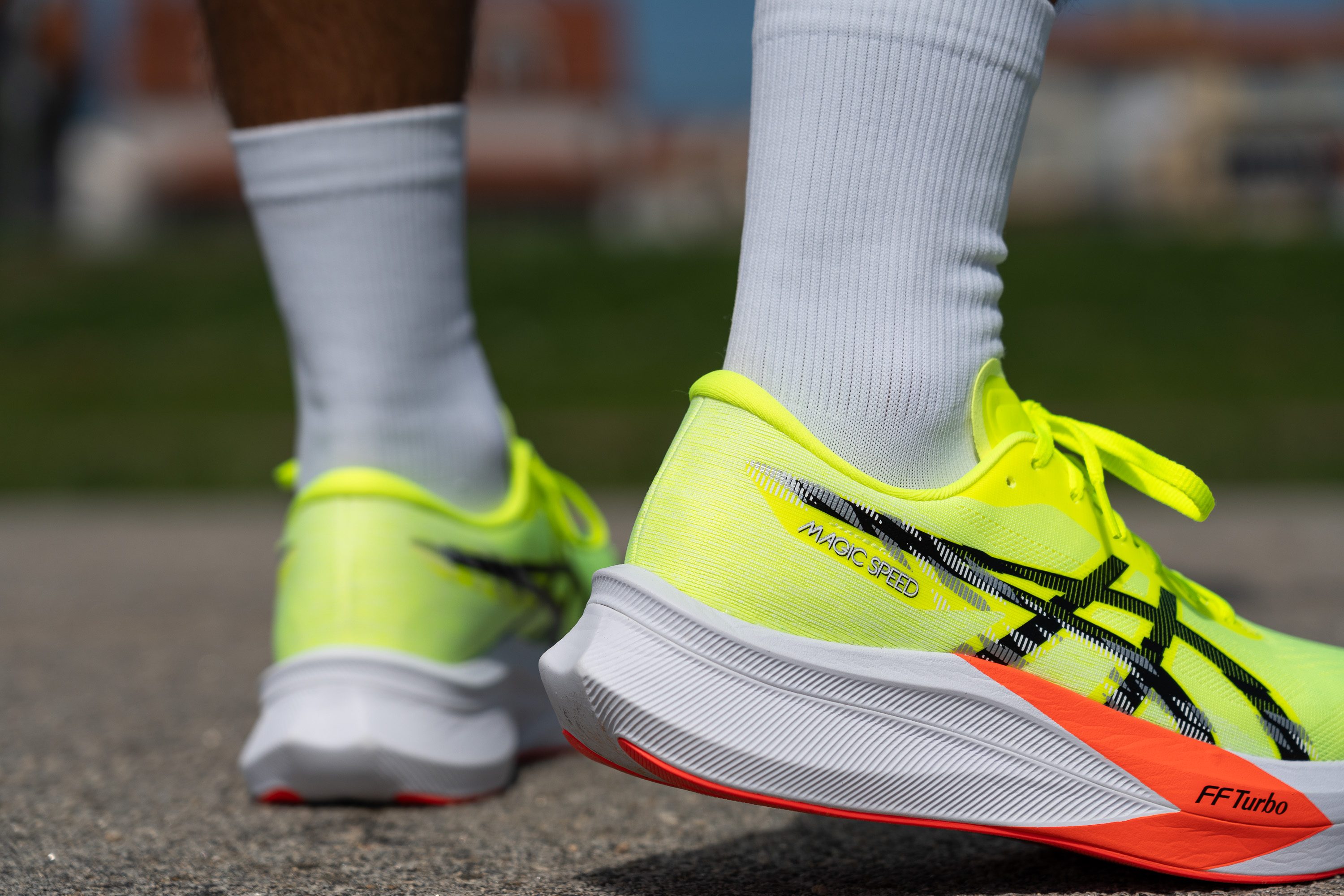
| Magic Speed 4 | None |

